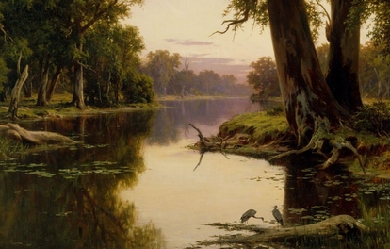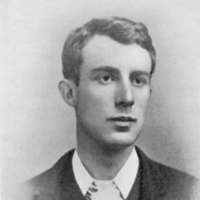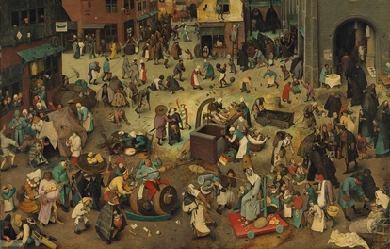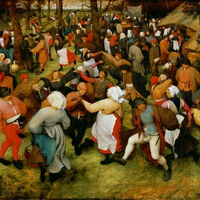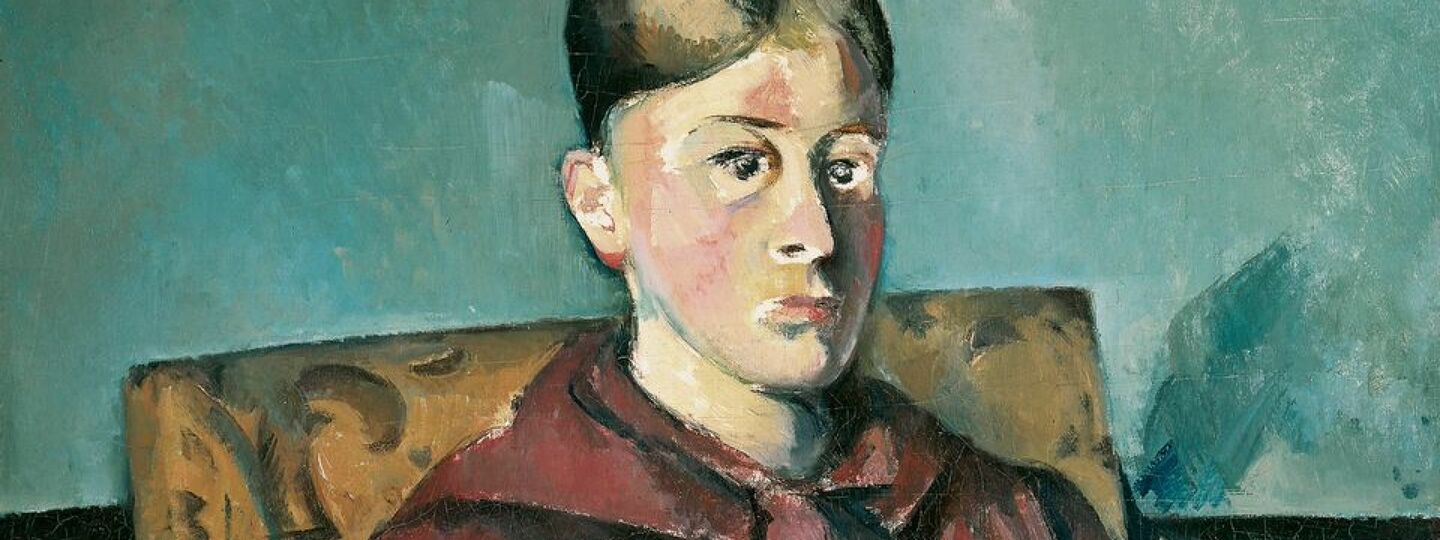
Info

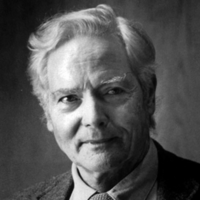
William Stanley Merwin (born September 30, 1927) is an American poet, credited with over fifty books of poetry, translation and prose. During the 1960s anti-war movement, Merwin’s unique craft was thematically characterized by indirect, unpunctuated narration. In the 1980s and 1990s, Merwin’s writing influence derived from his interest in Buddhist philosophy and deep ecology. Residing in Hawaii, he writes prolifically and is dedicated to the restoration of the islands’ rainforests. Merwin has received many honors, including the Pulitzer Prize for Poetry (in both 1971 and 2009), the National Book Award for Poetry (2005) and the Tanning Prize, one of the highest honors bestowed by the Academy of American Poets, as well as the Golden Wreath of the Struga Poetry Evenings. In 2010, the Library of Congress named Merwin the seventeenth United States Poet Laureate to replace the outgoing Kay Ryan. Following his receiving the Pulitzer Prize for Poetry in 2009, Merwin is recognized as one of the principal contributors to poetry in the early 21st century. Early life W. S. Merwin was born in New York City on September 30, 1927. He grew up on the corner of Fourth Street and New York Avenue in Union City, New Jersey until 1936, when his family moved to Scranton, Pennsylvania. As a child, he was enamored of the natural world, sometimes finding himself talking to the large tree in his back yard. He was also fascinated with things that he saw as links to the past, such as the building behind his home that had once been a barn that housed a horse and carriage. At the age of five he started writing hymns for his father, who was a Presbyterian minister. Career After attending Princeton University, Merwin married his first wife, Dorothy Jeanne Ferry, and moved to Spain. During his stay there, while visiting the renowned poet Robert Graves at his homestead on the island of Majorca, he served as tutor to Graves’s son. There, he met Dido Milroy—fifteen years older than he—with whom he collaborated on a play and whom he later married and lived with in London. In 1956, Merwin moved to Boston for a fellowship at the Poets’ Theater. He returned to London where he was friends with Sylvia Plath and Ted Hughes. In 1968, Merwin moved to New York City, separating from his wife who stayed at their home in France. In the late 1970s, Merwin moved to Hawaii and eventually was divorced from Dido Milroy. He married Paula Schwartz in 1983. In 1952 Merwin’s first book of poetry, A Mask for Janus, was published in the Yale Younger Poets Series. W. H. Auden selected the work for that distinction. Later, in 1971 Auden and Merwin would exchange harsh words in the pages of The New York Review of Books. Merwin had published “On Being Awarded the Pulitzer Prize” in the June 3, 1971, issue of The New York Review of Books outlining his objections to the Vietnam War and stating that he was donating his prize money to the draft resistance movement. From 1956 to 1957 Merwin was also playwright-in-residence at the Poet’s Theatre in Cambridge, Massachusetts; he became poetry editor at The Nation in 1962. Besides being a prolific poet (he has published over fifteen volumes of his works), he is also a respected translator of Spanish, French, Latin and Italian poetry (including Dante’s Purgatorio) as well as poetry from Sanskrit, Yiddish, Middle English, Japanese and Quechua. He also served as selector of poems of the late American poet Craig Arnold (1967–2009). Merwin is probably best known for his poetry about the Vietnam War, and can be included among the canon of Vietnam War-era poets which includes such luminaries as Robert Bly, Adrienne Rich; Denise Levertov; Robert Lowell; Allen Ginsberg and Yusef Komunyakaa. In 1998, Merwin wrote Folding Cliffs: A Narrative, an ambitious novel-in-verse about Hawaiʻi in history and legend. Merwin’s early subjects were frequently tied to mythological or legendary themes, while many of his poems featured animals. A volume called The Drunk in the Furnace (1960) marked a change for Merwin, in that he began to write in a much more autobiographical way. The title-poem is about Orpheus, seen as an old drunk. 'Where he gets his spirits / it’s a mystery’, Merwin writes; 'But the stuff keeps him musical’. Another poem of this period—'Odysseus’—reworks the traditional theme in a way that plays off poems by Stevens and Graves on the same topic. In the 1960s, Merwin lived in a small apartment in New York City’s Greenwich Village, and began to experiment boldly with metrical irregularity. His poems became much less tidy and controlled. He played with the forms of indirect narration typical of this period, a self-conscious experimentation explained in an essay called 'On Open Form’ (1969). The Lice (1967) and The Carrier of Ladders (1970) remain his most influential volumes. These poems often used legendary subjects (as in 'The Hydra’ or 'The Judgment of Paris’) to explore highly personal themes. In Merwin’s later volumes—such as The Compass Flower (1977), Opening the Hand (1983), and The Rain in the Trees (1988)—one sees him transforming earlier themes in fresh ways, developing an almost Zen-like indirection. His latest poems are densely imagistic, dream-like, and full of praise for the natural world. He has lived in Hawaii since the 1970s. Migration: New and Selected Poems won the 2005 National Book Award for poetry. A lifelong friend of James Wright, Merwin wrote an elegy to him that appears in the 2008 volume From the Other World: Poems in Memory of James Wright. The Shadow of Sirius, published in 2008 by Copper Canyon Press, was awarded the 2009 Pulitzer Prize for poetry. In June 2010, the Library of Congress named Merwin the seventeenth United States Poet Laureate to replace the outgoing Kay Ryan. He is the subject of the 2014 documentary film Even Though the Whole World Is Burning. Merwin appeared in the PBS documentary “The Buddha,” released in 2010. He had moved to Hawaii to study with the Zen Buddhist master Robert Aitkin in 1976. Personal life Today, Merwin lives on a former pineapple plantation built atop a dormant volcano on the northeast coast of Maui. Awards * Each year links to its corresponding "[year] in poetry" or "[year] in literature" article: * 1952: Yale Younger Poets Prize for A Mask for Janus * 1954: Kenyon Review Fellowship in Poetry * 1956: Rockefeller Fellowship * 1957: National Institute of Arts and Letters grant * 1957: Playwrighting Bursary, Arts Council of Great Britain * 1961: Rabinowitz Foundation Grant * 1962: Bess Hokin Prize, Poetry magazine * 1964/1965: Ford Foundation Grant * 1966: Chapelbrook Foundation Fellowship * 1967: Harriet Monroe Memorial Prize, Poetry magazine * 1969: PEN Translation Prize for Selected Translations 1948-1968 * 1969: Rockefeller Foundation Grant * 1971: Pulitzer Prize for Poetry for The Carrier of Ladders (published in 1971) * 1973: Academy of American Poets Fellowship * 1974: Shelley Memorial Award * 1979: Bollingen Prize for Poetry, Yale University Library * 1987: Governor’s Award for Literature of the state of Hawaii * 1990: Maurice English Poetry Award * 1993: The Tanning Prize for mastery in the art of poetry * 1993: Lenore Marshall Poetry Prize for Travels * 1994: Lila Wallace-Reader’s Digest Writers’ Award * 1998: Ruth Lilly Poetry Prize, awarded by The Poetry Foundation * 1999: Poetry Consultant to the Library of Congress, a jointly-held position with Rita Dove and Louise Glück * 2005: National Book Award for Poetry for Migration: New and Selected Poems * 2004: Golden Wreath Award of the Struga Poetry Evenings Festival in Macedonia * 2004: Lannan Lifetime Achievement Award * 2008: Golden Plate Award, American Academy of Achievement * 2009: Pulitzer Prize for Poetry for The Shadow of Sirius (published in 2008) * 2010: Kenyon Review Award for Literary Achievement * 2010: United States Poet Laureate * 2013: The Zbigniew Herbert International Literary Award Other accolades * Merwin’s former home town of Union City, New Jersey honored him in 2006 by renaming a local street near his former home W.S. Merwin Way. Bibliography * * Each year links to its corresponding "[year] in poetry" or "[year] in literature" article: Poetry - collections * * 1952: A Mask for Janus, New Haven, Connecticut: Yale University Press; awarded the Yale Younger Poets Prize, 1952 (reprinted as part of The First Four Books of Poems, 1975) * 1954: The Dancing Bears, New Haven, Connecticut: Yale University Press (reprinted as part of The First Four Books of Poems, 1975) * 1956: Green with Beasts, New York: Knopf (reprinted as part of The First Four Books of Poems, 1975) * 1960: The Drunk in the Furnace, New York: Macmillan (reprinted as part of The First Four Books of Poems, 1975) * 1963: The Moving Target, New York: Atheneum * 1966: Collected Poems, New York: Atheneum * 1967: The Lice, New York: Atheneum * 1969: Animae, San Francisco: Kayak * 1970: The Carrier of Ladders, New York: Atheneum;—winner of the Pulitzer Prize * 1970: Signs, illustrated by A. D. Moore; Iowa City, Iowa: Stone Wall Press * 1973: Writings to an Unfinished Accompaniment, New York: Atheneum * 1975: The First Four Books of Poems, containing A Mask for Janus, The Dancing Bears, Green with Beasts, and The Drunk in the Furnace, New York: Atheneum; (reprinted in 2000, Port Townsend, Washington: Copper Canyon Press) * 1977: The Compass Flower, New York: Atheneum * 1978: Feathers From the Hill, Iowa City, Iowa: Windhover * 1982: Finding the Islands, San Francisco: North Point Press * 1983: Opening the Hand, New York: Atheneum * 1988: The Rain in the Trees, New York: Knopf * 1988: Selected Poems, New York: Atheneum * 1993: The Second Four Books of Poems, Port Townsend, Washington: Copper Canyon Press * 1993: Travels: Poems, New York: Knopf winner of the 1993 Lenore Marshall Poetry Prize * 1996: The Vixen: Poems, New York: Knopf * 1997: Flower and Hand: Poems, 1977-1983 Port Townsend, Washington: Copper Canyon Press * 1998: The Folding Cliffs: A Narrative, a “novel-in-verse” New York: Knopf * 1999: The River Sound: Poems, New York: Knopf * 2001: The Pupil, New York: Knopf * 2005: Migration: New and Selected Poems, Port Townsend, Washington: Copper Canyon Press—winner of the National Book Award for Poetry * 2005: Present Company, Port Townsend, Washington: Copper Canyon Press * 2008: The Shadow of Sirius, Port Townsend, Washington: Copper Canyon Press—winner of the Pulitzer Prize * 2013: The Collected Poems of W. S. Merwin, New York: Library of America * 2014: The Moon Before Morning, Port Townsend, Washington: Copper Canyon Press Poems * Prose * * 1970: The Miner’s Pale Children, New York: Atheneum (reprinted in 1994, New York: Holt) * 1977: Houses and Travellers, New York: Atheneum (reprinted in 1994, New York: Holt) * Regions of Memory * 1982: Unframed Originals: Recollections * 1992: The Lost Uplands: Stories of Southwest France, New York: Knopf * 2002: The Mays of Ventadorn, National Geographic Directions Series; Washington: National Geographic * 2004: The Ends of the Earth, essays, Washington: Shoemaker & Hoard * 2005: Summer Doorways: A Memoir * 2007: The Book of Fables, Port Townsend, Washington: Copper Canyon Press Plays * * 1956: Darkling Child (with Dido Milroy), produced this year * 1957: Favor Island, produced this year at Poets’ Theatre in Cambridge, Massachusetts (broadcast in 1958 by Third Programme, British Broadcasting Corporation) * 1961: The Gilded West, produced this year at Belgrade Theatre, Coventry, England Translations * * 1959: The Poem of the Cid, London: Dent (American edition, 1962, New York: New American Library) * 1960: The Satires of Persius, Bloomington, Indiana: Indiana University Press * 1961: Some Spanish Ballads, London: Abelard (American edition: Spanish Ballads, 1961, New York: Doubleday Anchor) * 1962: The Life of Lazarillo de Tormes: His Fortunes and Adversities, a Spanish novella; New York: Doubleday Anchor * 1963: The Song of Roland * 1969: Selected Translations, 1948 - 1968, New York: Atheneum; winner of the PEN Translation Prize * 1969: Twenty Love Poems and a Song of Despair, poems by Pablo Neruda; London: Jonathan Cape (reprinted in 2004 with an introduction by Christina Garcia, New York: Penguin Books) * 1969: Products of the Perfected Civilization, Selected Writings of Chamfort, also author of the introduction; New York: Macmillan * 1969: Voices: Selected Writings of Antonio Porchia, Chicago: Follett (reprinted in 1988 and 2003, Port Townsend, Washington: Copper Canyon Press) * 1969: Transparence of the World, poems by Jean Follain, New York: Atheneum (reprinted in 2003, Port Townsend, Washington: Copper Canyon Press) * 1971: “Eight Quechua Poems”, The Hudson Review * 1973: Asian Figures, New York: Atheneum * 1974: Osip Mandelstam: Selected Poems (with Clarence Brown), New York: Oxford University Press (reprinted in 2004 as The Selected Poems of Osip Mandelstam, New York: New York Review of Books) * 1977: Sanskrit Love Poetry (with J. Moussaieff Masson), New York: Columbia University Press (published in 1981 as Peacock’s Egg: Love Poems from Ancient India, San Francisco: North Point Press) * 1977: Vertical Poetry, poems by Roberto Juarroz; San Francisco: Kayak (reprinted in 1988; San Francisco: North Point Press) * 1978: Euripides’ Iphigeneia at Aulis (with George E. Dimock, Jr.), New York: Oxford University Press * 1979: Selected Translations, 1968-1978, New York: Atheneum * 1981: Robert the Devil, an anonymous French play; with an introduction by the translator; Iowa City, Iowa: Windhover * 1985: Four French Plays, including Robert the Devil; The Rival of His Master and Turcaret by Alain-René Lesage; and The False Confessions by Pierre de Marivaux; New York: Atheneum * 1985: From the Spanish Morning, consisting of Spanash Ballads by Lope de Rueda and Eufemia: The Life of Lazarillo de Torres (originally translated in Tulane Drama Review, December 1958); New York: Atheneum * 1989: Sun at Midnight, poems by Musō Soseki (with Soiku Shigematsu) * 1996: Pieces of Shadow: Selected Poems of Jaime Sabines * 1998: East Window: The Asian Translations, translated poems from earlier collections, Port Townsend, Washington: Copper Canyon Press * 2000: Purgatorio from The Divine Comedy of Dante; New York: Knopf * 2005: Gawain and the Green Knight, a New Verse Translation, New York: Knopf * 2013: Selected Translations, translated poems from 1948 - 2010, Port Townsend, Washington: Copper Canyon Press * 2013: Collected Haiku of Yosa Buson, Port Townsend, Washington: Copper Canyon Press (with Takako Lento) * 2013: Sun At Midnight, poems by Muso Soseki, Port Townsend, Washington: Copper Canyon Press (with Soiku Shigematsu) (updated and reissued) Editor * * 1961: West Wind: Supplement of American Poetry, London: Poetry Book Society * 1996: Lament for the Makers: A Memorial Anthology (compiler), Washington: Counterpoint Other sources * * The Union City Reporter March 12, 2006. Archives * * Merwin’s literary papers are held at The Rare Book & Manuscript Library (University of Illinois at Urbana-Champaign). The collection, which is open to researchers, consists of some 5,500 archival items and 450 printed books. References Wikipedia—https://en.wikipedia.org/wiki/W._S._Merwin
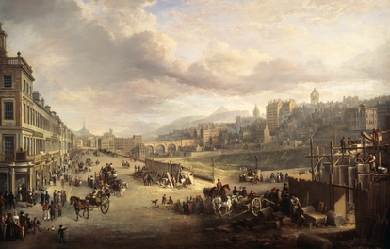
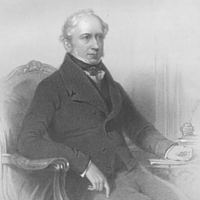
James Montgomery (4 November 1771– 30 April 1854) was a British poet, hymnwriter and editor. He was particularly associated with humanitarian causes such as the campaigns to abolish slavery and to end the exploitation of child chimney sweeps. Montgomery was born at Irvine in Ayrshire in south-west Scotland, the son of a pastor and missionary of the Moravian Brethren.
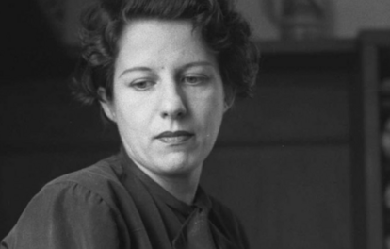
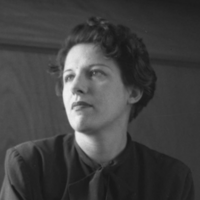
Margarita Michelena (Pachuca de Soto, Hidalgo, 21 de julio de 1917 - Ciudad de México, 27 de marzo de 1998) fue una poeta, crítica literaria, periodista y traductora mexicana. Fue fundadora del diario "El Cotidiano"; directora de "El Libro y el Pueblo", "Respuesta", "La Cultura en México" y "Cuestión" y editora de "Novedades y Excélsior". También trabajó como guionista para la XEW y como conductora en XEMX Radio Femenina. Se distinguió por una fina sensibilidad y pureza lírica de bien dibujados símbolos poéticos. Figura en antologías de poesía mexicana e hispanoamericana editadas en México, España y Argentina.
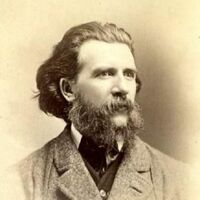
Gerald Massey (29 May 1828 – 29 October 1907) was an English poet and writer on Spiritualism and Ancient Egypt. Early life Massey was born near Tring, Hertfordshire in England to poor parents. When little more than a child, he was made to work hard in a silk factory, which he afterward deserted for the equally laborious occupation of straw plaiting. These early years were rendered gloomy by much distress and deprivation, against which the young man strove with increasing spirit and virility, educating himself in his spare time, and gradually cultivating his innate taste for literary work. He was attracted by the movement known as Christian Socialism, into which he threw himself with whole-hearted vigour, and so became associated with Frederick Denison Maurice and Charles Kingsley. Later life From about 1870 onwards, Massey became increasingly interested in Egyptology and the similarities that exist between ancient Egyptian mythology and the Gospel stories. He studied the extensive Egyptian records housed in the Assyrian and Egyptology section of the British Museum in London where he worked closely with the curator, Dr. Samuel Birch, and other leading Egyptologists of his day, even learning hieroglyphics at the time the Temple of Horus at Edfu was first being excavated. Writing career Massey's first public appearance as a writer was in connection with a journal called the Spirit of Freedom, of which he became editor, and he was only twenty-two when he published his first volume of poems, Voices of Freedom and Lyrics of Love (1850). These he followed in rapid succession with The Ballad of Babe Christabel (1854), War Waits (1855), Havelock's March (1860), and A Tale of Eternity (1869). In 1889, Massey published a two-volume collection of his poems called My Lyrical Life. He also published works dealing with Spiritualism, the study of Shakespeare's sonnets (1872 and 1890), and theological speculation. It is generally understood that he was the original of George Eliot's Felix Holt.[1] Massey's poetry has a certain rough and vigorous element of sincerity and strength which easily accounts for its popularity at the time of its production. He treated the theme of Sir Richard Grenville before Tennyson thought of using it, with much force and vitality. Indeed, Tennyson's own praise of Massey's work is still its best eulogy, for the Laureate found in him a poet of fine lyrical impulse, and of a rich half-Oriental imagination. The inspiration of his poetry is a combination of his vast knowledge based on travels, research and experiences; he was a patriotic humanist to the core. His poem "The Merry, Merry May" was set to music in 1894 by the composer Cyril Rootham and then in a popular song by composer Christabel Baxendale. In regard to Ancient Egypt, Massey first published The Book of the Beginnings, followed by The Natural Genesis. His most prolific work is Ancient Egypt: The Light of the World, published shortly before his death. Massey was a believer in spiritual evolution; he opined that Darwin's theory of evolution was incomplete without spiritualism: The theory contains only one half the explanation of man's origins and needs spiritualism to carry it through and complete it. For while this ascent on the physical side has been progressing through myriads of ages, the Divine descent has also been going on – man being spiritually an incarnation from the Divine as well as a human development from the animal creation. The cause of the development is spiritual. Mr. Darwin's theory does not in the least militate against ours – we think it necessitates it; he simply does not deal with our side of the subject. He can not go lower than the dust of the earth for the matter of life; and for us, the main interest of our origin must lie in the spiritual domain. Assertions about Jesus and Horus One of the more important aspects of Massey's writings were his assertions that there were parallels between Jesus and the Egyptian god Horus, primarily contained in book The Natural Genesis first published in 1883. Massey, for example, argued in the book his belief that: both Horus and Jesus were born of virgins on 25 December, raised men from the dead (Massey speculates that the biblical Lazarus, raised from the dead by Jesus, has a parallel in El-Asar-Us, a title of Osiris), died by crucifixion and were resurrected three days later.[5] These assertions have influenced various later writers such as Alvin Boyd Kuhn, Tom Harpur, Yosef Ben-Jochannan, and Dorothy M. Murdock.[6][7][unreliable source?] Like Godfrey Higgins a half-century earlier, Massey believed that Western religions had mythical roots. The human mind has long suffered an eclipse and been darkened and dwarfed in the shadow of ideas the real meaning of which has been lost to moderns. Myths and allegories whose significance was once unfolded in the Mysteries have been adopted in ignorance and reissued as real truths directly and divinely vouchsafed to humanity for the first and only time! The early religions had their myths interpreted. We have ours misinterpreted. And a great deal of what has been imposed on us as God’s own true and sole revelation to us is a mass of inverted myths. Christian ignorance notwithstanding, the Gnostic Jesus is the Egyptian Horus who was continued by the various sects of gnostics under both the names of Horus and of Jesus. In the gnostic iconography of the Roman Catacombs child-Horus reappears as the mummy-babe who wears the solar disc. The royal Horus is represented in the cloak of royalty, and the phallic emblem found there witnesses to Jesus being Horus of the resurrection. Criticism Christian theologian W. Ward Gasque, a Ph.D. from Harvard and Manchester University, sent emails to twenty Egyptologists that he considered leaders of the field – including Kenneth Kitchen of the University of Liverpool and Ron Leprohan of the University of Toronto – in Canada, the United States, Britain, Australia, Germany and Austria to verify academic support for some of these assertions. His primary targets were Tom Harpur, Alvin Boyd Kuhn and the Christ myth theory, and only indirectly Massey. Ten out of twenty responded, but most were not named. According to Gasque, Massey's work, which draws comparisons between the Judeo-Christian religion and the Egyptian religion, is not considered significant in the field of modern Egyptology and is not mentioned in the Oxford Encyclopedia of Ancient Egypt or similar reference works of modern Egyptology. Gasque reports that those who responded were unanimous in dismissing the proposed etymologies for Jesus and Christ, and one unspecified Egyptologist referred to Alvin Boyd Kuhn's comparison as "fringe nonsense."[11][unreliable source?] However, Harpur's response to Gasque quotes leading contemporary Egyptologist Erik Hornung that there are parallels between Christianity and ancient Egypt, as do the writings of biblical expert Thomas L. Thompson. Theologian Stanley E. Porter has pointed out that Massey's analogies include a number of errors, for example Massey stated that 25 December as the date of birth of Jesus was selected based on the birth of Horus, but the New Testament does not include any reference to the date or season of the birth of Jesus. The earliest known source recognizing 25 December as the date of birth of Jesus is by Hippolytus of Rome, written around the beginning of the 3rd century, based on the assumption that the conception of Jesus took place at the Spring equinox. Hippolytus placed the equinox on 25 March and then added 9 months to get 25 December, thus establishing the date for festivals. The Roman Chronography of 354 then included an early reference to the celebration of a Nativity feast in December, as of the fourth century. Porter states that Massey's serious historical errors often render his works nonsensical, for example Massey states that the biblical references to Herod the Great were based on the myth of "Herrut" the evil hydra serpent, while the existence of Herod the Great can be well established without reliance on Christian sources. References Wikipedia—https://en.wikipedia.org/wiki/Gerald_Massey
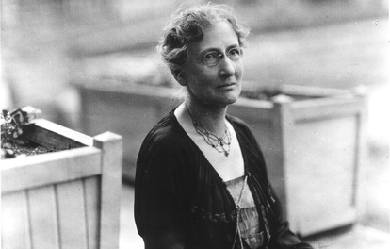
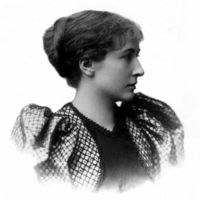
Harriet Monroe (December 23, 1860– September 26, 1936) was an American editor, scholar, literary critic, poet and patron of the arts. She is best known as the founding publisher and long-time editor of Poetry magazine, which made its debut in 1912. As a supporter of the poets Wallace Stevens, Ezra Pound, H. D., T. S. Eliot, William Carlos Williams, Carl Sandburg, Max Michelson and others, she played an important role in the development of modern poetry. Because she was a longtime correspondent of the poets she supported, her letters provide a wealth of information on their thoughts and motives. Monroe was born in Chicago, Illinois. She read at an early age; her father had a large library that provided refuge from domestic discord. In her autobiography, A Poet’s Life: Seventy Years in a Changing World, published two years after her death, Monroe recalls: “I started in early with Shakespeare, Byron, Shelley, with Dickens and Thackeray; and always the book-lined library gave me a friendly assurance of companionship with lively and interesting people, gave me friends of the spirit to ease my loneliness.”
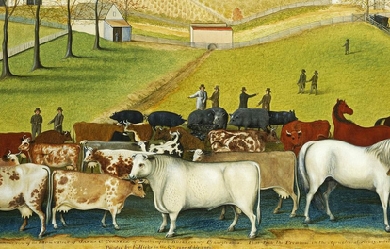
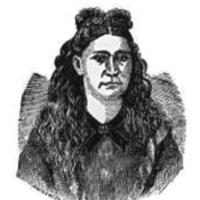
Julia Ann Moore, the “Sweet Singer of Michigan”, born Julia Ann Davis in Plainfield Township, Kent County, Michigan (December 1, 1847–June 5, 1920), was an American poet, or more precisely, poetaster. Like Scotland’s William McGonagall, she is famed chiefly for writing notoriously bad poetry. Biography Young Julia grew up on her family’s Michigan farm, the eldest of four children. When she was ten, her mother became ill, and Julia assumed many of her mother’s responsibilities. Her formal education was thereby limited. In her mid-teens, she started writing poetry and songs, mostly in response to the death of children she knew, but any newspaper account of disaster could inspire her. At age 17, she married Frederick Franklin Moore, a farmer. Julia ran a small store and, over the years, bore ten children, of whom six survived to adulthood. She continued to write poetry and songs. Moore’s first book of verse, The Sentimental Song Book was published in 1876 by C. M. Loomis of Grand Rapids, and quickly went into a second printing. A copy ended up in the hands of James F. Ryder, a Cleveland publisher, who republished it under the title The Sweet Singer of Michigan Salutes the Public. Ryder sent out numerous review copies to newspapers across the country, with a cover letter filled with low key mock praise. And so Moore received national attention. Following Ryder’s lead, contemporary reviews were amusedly negative. The Rochester Democrat wrote of Sweet Singer, that Shakespeare, could he read it, would be glad that he was dead …. If Julia A. Moore would kindly deign to shed some of her poetry on our humble grave, we should be but too glad to go out and shoot ourselves tomorrow. The Hartford Daily Times said that to meet such steady and unremitting demands on the lachrymal ducts one must be provided, as Sam Weller suspected Job Trotter was, ‘with a main, as is allus let on.’… The collection became a curious best-seller, though it is unclear whether this was due to public amusement with Moore’s poetry or genuine appreciation of the admittedly “sentimental” character of her poems. It was, more or less, the last gasp of that school of obituary poetry that had been broadly popular in the U. S. throughout the mid-19th century. Moore gave a reading and singing performance, with orchestral accompaniment, in 1877 at a Grand Rapids opera house. She managed to interpret jeering as criticism of the orchestra. Moore’s second collection, A Few Choice Words to the Public appeared in 1878, but found few buyers. Moore gave a second public performance in late 1878 at the same opera house. By then she had figured out that the praise directed to her was false and the jeering sincere. She began by admitting her poetry was “partly full of mistakes” and that “literary is a work very hard to do”. After the poetry and the laughter and jeering in response was over, Moore ended the show by telling the audience: You have come here and paid twenty-five cents to see a fool; I receive seventy-five dollars, and see a whole houseful of fools. Afterwards, her husband forbade her to publish any more poetry. Three more poems were eventually published, and she would write poems for friends. In 1880, she also published, in newspaper serialization, a short story “Lost and Found”, a strongly moralistic story about a drunkard, and a novella “Sunshine and Shadow”, a peculiar romance set in the American Revolution. The ending of “Sunshine and Shadow” was perhaps intended to be self-referential: the farmer facing foreclosure is gratefully rescued by his wife’s publishing her secret cache of fiction. According to some reports, though, her husband was not grateful, but embarrassed. Shamed or not, he moved the family 100 miles north to Manton in 1882. Moore’s notoriety was known in Manton, but the locals respected her, and did not cooperate with the occasional reporter trying to revisit the past. They were a successful business couple, he with an orchard and sawmill, she with a store. Her husband died in 1914. The next year, Julia republished “Sunshine and Shadow” in pamphlet form. She spent much of her widowhood “melancholy”, sitting on her porch. She died quietly in 1920. The news of her death was widely reported, sometimes with a light touch. On her poetry Some comparison to William McGonagall is worth making. Unlike McGonagall, Moore commanded a fairly wide variety of meters and forms, albeit like Emily Dickinson the majority of her verse is in the ballad meter. Like McGonagall, she held a maidenly bluestocking’s allegiance to the Temperance movement, and frequently indited odes to the joys of sobriety. Most importantly, like McGonagall, she was drawn to themes of accident, disaster, and sudden death; as has been said of A. E. Housman’s A Shropshire Lad, in her pages you can count the dead and wounded. Edgar Wilson Nye called her “worse than a Gatling gun”. Here, she is inspired by the Great Chicago Fire: The great Chicago Fire, friends, Will never be forgot; In the history of Chicago It will remain a darken spot. It was a dreadful horrid sight To see that City in flames; But no human aid could save it, For all skill was tried in vain. Her less morbid side is on display when she hymns Temperance Reform Clubs: Many a man joined the club That never drank a drachm, Those noble men were kind and brave They care not for the slang— The slang they meet on every side: “You’re a reform drunkard, too; You’ve joined the red ribbon brigade, Among the drunkard crew.” Despite her acknowledgment that “Literary is a work very difficult to do,” she did not approve of the life of Byron: The character of “Lord Byron” Was of a low degree, Caused by his reckless conduct, And bad company. He sprung from an ancient house, Noble, but poor, indeed. His career on earth, was marred By his own misdeeds. Influence Mark Twain was a self-described fan of Moore (though not for the reasons Moore would have liked). Twain alluded to her work in Following the Equator, and it is widely assumed that Moore served as a literary model for the character of Emmeline Grangerford in Adventures of Huckleberry Finn. Grangerford’s funereal ode to Stephen Dowling Botts: O no. Then list with tearful eye, Whilst I his fate do tell. His soul did from this cold world fly By falling down a well. They got him out and emptied him; Alas it was too late; His spirit was gone for to sport aloft In the realms of the good and great. (Twain) is not far removed from Moore’s poems on subjects like Little Libbie: One more little spirit to Heaven has flown, To dwell in that mansion above, Where dear little angels, together roam, In God’s everlasting love. (Moore) Moore was also the inspiration for comic poet Ogden Nash, as he acknowledged in his first book, and whose daughter reported that her work convinced Nash to become a “great bad poet” instead of a “bad good poet”. The Oxford Companion to American Literature describes Nash as using Moore’s hyperdithyrambic meters, pseudo-poetic inversions, gangling asymmetrical lines, extremely pat or elaborately inexact rimes, parenthetical dissertations, and unexpected puns. Selections of Moore appeared in D. B. Wyndham-Lewis and Charles Lee’s famous Stuffed Owl anthology, and in other collections of bad poetry. Most of her poetry was reprinted in a 1928 edition, which can be found online. Her complete poetry and prose, with biography, notes, and references, can be found in the Riedlinger edited collection Mortal Refrains. Most poetry collections reprint the latest, “best”, versions of their contents. Riedlinger has adopted the opposite philosophy. Moore has been grouped into the Western Michigan School of Bad Versemakers. Her local contemporaries—including Dr. William Fuller, S.H. Ewell, J.B. Smiley, and Fred Yapple—do not appear to have had relationships with each other, but their proximity and similar penchant for exceptionally laughable verse have led to their posthumous grouping together.
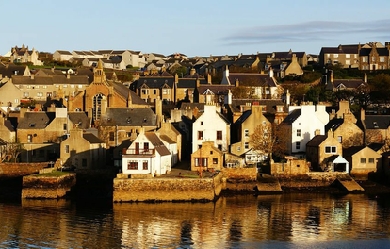
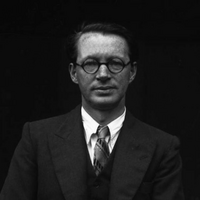
Edwin Muir (15 May 1887– 3 January 1959) was an Orcadian poet, novelist and translator, born on a farm in Deerness. He is remembered for his deeply felt and vivid poetry in plain language with few stylistic preoccupations, and for his extensive translations of Franz Kafka’s works with his wife Willa Muir. Biography Muir was born at the farm of Folly in Deerness, the same parish in which his mother was born. The family then moved to the island of Wyre, followed by the mainland of Orkney. In 1901, when he was 14, his father lost his farm, and the family moved to Glasgow. In quick succession his father, two brothers, and his mother died within the space of a few years. His life as a young man was a depressing experience, and involved a raft of unpleasant jobs in factories and offices, including working in a factory that turned bones into charcoal. “He suffered psychologically in a most destructive way, although perhaps the poet of later years benefitted from these experiences as much as from his Orkney 'Eden’.” In 1919, Muir married Willa Anderson, and the two moved to London. About this, Muir wrote simply 'My marriage was the most fortunate event in my life’. They would later collaborate on highly acclaimed English translations of such writers as Franz Kafka, Gerhart Hauptmann, Sholem Asch, Heinrich Mann, and Hermann Broch. Between 1921 and 1923, Muir lived in Prague, Dresden, Italy, Salzburg and Vienna; he returned to the UK in 1924. Between 1925 and 1956, Muir published seven volumes of poetry which were collected after his death and published in 1991 as The Complete Poems of Edwin Muir. From 1927 to 1932 he published three novels, and in 1935 he came to St Andrews, where he produced his controversial Scott and Scotland (1936). From 1946 to 1949 he was Director of the British Council in Prague and Rome. 1950 saw his appointment as Warden of Newbattle Abbey College (a college for working-class men) in Midlothian, where he met fellow Orcadian poet, George Mackay Brown. In 1955 he was made Norton Professor of English at Harvard University. He returned to Britain in 1956 but died in 1959 at Swaffham Prior, Cambridge, and was buried there. A memorial bench was erected in 1962 to Muir in the idyllic village of Swanston, Edinburgh, where he spent time during the 1950s. Work His childhood in remote and unspoiled Orkney represented an idyllic Eden to Muir, while his family’s move to the city corresponded in his mind to a deeply disturbing encounter with the “fallen” world. The emotional tensions of that dichotomy shaped much of his work and deeply influenced his life. His psychological distress led him to undergo Jungian analysis in London. A vision in which he witnessed the creation strengthened the Edenic myth in his mind, leading him to see his life and career as the working-out of an archetypal fable. In his Autobiography he wrote, “the life of every man is an endlessly repeated performance of the life of man...”. He also expressed his feeling that our deeds on Earth constitute “a myth which we act almost without knowing it.” Alienation, paradox, the existential dyads of good and evil, life and death, love and hate, and images of journeys and labyrinths are key elements in his work. His Scott and Scotland advanced the claim that Scotland can create a national literature only by writing in English, an opinion that placed him in direct opposition to the Lallans movement of Hugh MacDiarmid. He had little sympathy for Scottish nationalism. In 1965 a volume of his selected poetry was edited and introduced by T. S. Eliot. Many of Edwin and Willa Muir’s translations of German novels are still in print. The following quotation expresses the basic existential dilemma of Edwin Muir’s life: “I was born before the Industrial Revolution, and am now about two hundred years old. But I have skipped a hundred and fifty of them. I was really born in 1737, and till I was fourteen no time-accidents happened to me. Then in 1751 I set out from Orkney for Glasgow. When I arrived I found that it was not 1751, but 1901, and that a hundred and fifty years had been burned up in my two-days’ journey. But I myself was still in 1751, and remained there for a long time. All my life since I have been trying to overhaul that invisible leeway. No wonder I am obsessed with Time." (Extract from Diary 1937–39.) Muir came to regard his family’s movement from Orkney to Glasgow as a movement from Eden to Hell. In 1958, Edwin and Willa Muir were granted the Johann-Heinrich-Voss Translation Award. Works * We Moderns: Enigmas and Guesses, under the pseudonym Edward Moore, London, George Allen & Unwin, 1918 * Latitudes, New York, B. W. Huebsch, 1924 * First Poems, London, Hogarth Press, 1925 * Chorus of the Newly Dead, London, Hogarth Press, 1926 * Transition: Essays on Contemporary Literature, London, Hogarth Press, 1926 * The Marionette, London, Hogarth Press, 1927 * The Structure of the Novel, London, Hogarth Press, 1928 * John Knox: Portrait of a Calvinist, London, Jonathan Cape, 1929 * The Three Brothers, London, Heinemann, 1931 * Poor Tom, London, J. M. Dent & Sons, 1932 * Variations on a Time Theme, London, J. M. Dent & Sons, 1934 * Scottish Journey London, Heinemann in association with Victor Gollancz, 1935 * Journeys and Places, London, J. M. Dent & Sons, 1937 * The Present Age from 1914, London, Cresset Press, 1939 * The Story and the Fable: An Autobiography, London, Harrap, 1940 * The Narrow Place, London, Faber, 1943 * The Scots and Their Country, London, published for the British Council by Longman, 1946 * The Voyage, and Other Poems, London, Faber, 1946 * Essays on Literature and Society, London, Hogarth Press, 1949 * The Labyrinth, London, Faber, 1949 * Collected Poems, 1921–1951, London, Faber, 1952 * An Autobiography, London: Hogarth Press, 1954 * Prometheus, illustrated by John Piper, London, Faber, 1954 * One Foot in Eden, New York, Grove Press, 1956 * New Poets, 1959 (edited), London, Eyre & Spottiswoode, 1959 * The Estate of Poetry, Cambridge, MA, Harvard University Press, 1962 * Collected Poems, London and New York, Oxford University Press, 1965 * The Politics of King Lear, New York, Haskell House, 1970 Translations by Willa and Edwin Muir * Power by Lion Feuchtwanger, New York, Viking Press, 1926 * The Ugly Duchess: A Historical Romance by Lion Feuchtwanger, London, Martin Secker, 1927 * Two Anglo-Saxon Plays: The Oil Islands and Warren Hastings, by Lion Feuchtwanger, London, Martin Secker, 1929 * Success: A Novel by Lion Feuchtwanger, New York, Viking Press, 1930 * The Castle by Franz Kafka, London, Martin Secker, 1930 * The Sleepwalkers: A Trilogy by Hermann Broch, Boston, MA, Little, Brown & Company, 1932 * Josephus by Lion Feuchtwanger, New York, Viking Press, 1932 * Salvation by Sholem Asch, New York, G.P. Putnam’s Sons, 1934 * The Hill of Lies by Heinrich Mann, London, Jarrolds, 1934 * Mottke, the Thief by Sholem Asch, New York, G.P. Putnam’s Sons, 1935 * The Unknown Quantity by Hermann Broch, New York, Viking Press, 1935 * The Jew of Rome: A Historical Romance by Lion Feuchtwanger, London, Hutchinson, 1935 * The Loom of Justice by Ernst Lothar, New York, G.P. Putnam’s Sons, 1935 * Night over the East by Erik von Kuehnelt-Leddihn, London, Sheed & Ward, 1936 * The Pretender by Lion Feuchtwanger, New York, The Viking Press, 1937 * Amerika by Franz Kafka, New York, Doubleday/New Directions, 1946 * The Trial by Franz Kafka, London, Martin Secker, 1937, reissued New York, The Modern Library, 1957 * Metamorphosis and Other Stories by Franz Kafka, Harmondsworth, Penguin Books, 1961. References Wikipedia—https://en.wikipedia.org/wiki/Edwin_Muir
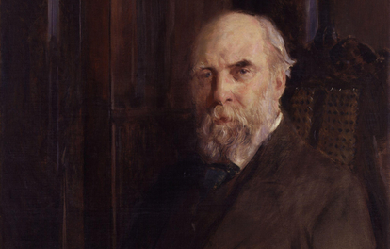

William Cosmo Monkhouse (18 March 1840– 20 July 1901) was an English poet and critic. He was born in London. His father, Cyril John Monkhouse, was a solicitor; his mother’s maiden name was Delafosse. He was educated at St Paul’s School, quitting it at seventeen to enter the board of trade as a junior supplementary clerk, from which grade he rose eventually to be the assistant-secretary to the finance department of the office. In 1870–71 he visited South America in connection with the hospital accommodation for seamen at Valparaíso, Chile, and other ports; and he served on different departmental committees, notably that of 1894–96 on the Mercantile Marine Fund. He was twice married: first, to Laura, daughter of James Keymer of Dartford; and, secondly, to Leonora Eliza, daughter of Commander Blount, R.N.

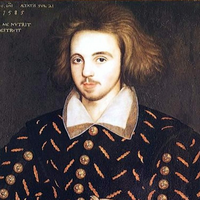
Christopher Marlowe, also known as Kit Marlowe (baptised 26 February 1564– 30 May 1593), was an English playwright, poet and translator of the Elizabethan era. Marlowe was the foremost Elizabethan tragedian of his day. He greatly influenced William Shakespeare, who was born in the same year as Marlowe and who rose to become the pre-eminent Elizabethan playwright after Marlowe’s mysterious early death. Marlowe’s plays are known for the use of blank verse and their overreaching protagonists. A warrant was issued for Marlowe’s arrest on 18 May 1593. No reason was given for it, though it was thought to be connected to allegations of blasphemy—a manuscript believed to have been written by Marlowe was said to contain “vile heretical conceipts”. On 20 May, he was brought to the court to attend upon the Privy Council for questioning. There is no record of their having met that day, however, and he was commanded to attend upon them each day thereafter until “licensed to the contrary”. Ten days later, he was stabbed to death by Ingram Frizer. Whether the stabbing was connected to his arrest has never been resolved. Early life Marlowe was born in Canterbury to shoemaker John Marlowe and his wife Catherine. His date of birth is not known, but he was baptised on 26 February 1564, and is likely to have been born a few days before. Thus, he was just two months older than his contemporary William Shakespeare, who was baptised on 26 April 1564 in Stratford-upon-Avon. Marlowe attended The King’s School in Canterbury (where a house is now named after him) and Corpus Christi College, Cambridge, where he studied on a scholarship and received his Bachelor of Arts degree in 1584. In 1587, the university hesitated to award him his Master of Arts degree because of a rumour that he intended to go to the English college at Rheims, presumably to prepare for ordination as a Roman Catholic priest. However, his degree was awarded on schedule when the Privy Council intervened on his behalf, commending him for his “faithful dealing” and “good service” to the Queen. The nature of Marlowe’s service was not specified by the Council, but its letter to the Cambridge authorities has provoked much speculation, notably the theory that Marlowe was operating as a secret agent working for Sir Francis Walsingham’s intelligence service. No direct evidence supports this theory, although the Council’s letter is evidence that Marlowe had served the government in some secret capacity. Literary career Of the dramas attributed to Marlowe, Dido, Queen of Carthage is believed to have been his first. It was performed by the Children of the Chapel, a company of boy actors, between 1587 and 1593. The play was first published in 1594; the title page attributes the play to Marlowe and Thomas Nashe. Marlowe’s first play performed on the regular stage in London, in 1587, was Tamburlaine the Great, about the conqueror Timur (Tamerlane), who rises from shepherd to warlord. It is among the first English plays in blank verse, and, with Thomas Kyd’s The Spanish Tragedy, generally is considered the beginning of the mature phase of the Elizabethan theatre. Tamburlaine was a success, and was followed with Tamburlaine the Great, Part II. The two parts of Tamburlaine were published in 1590; all Marlowe’s other works were published posthumously. The sequence of the writing of his other four plays is unknown; all deal with controversial themes. * The Jew of Malta (first published as The Famous Tragedy of the Rich Jew of Malta), about a Maltese Jew’s barbarous revenge against the city authorities, has a prologue delivered by a character representing Machiavelli. It was probably written in 1589 or 1590, and was first performed in 1592. It was a success, and remained popular for the next fifty years. The play was entered in the Stationers’ Register on 17 May 1594, but the earliest surviving printed edition is from 1633. * Edward the Second is an English history play about the deposition of King Edward II by his barons and the Queen, who resent the undue influence the king’s favourites have in court and state affairs. The play was entered into the Stationers’ Register on 6 July 1593, five weeks after Marlowe’s death. The full title of the earliest extant edition, of 1594, is The troublesome reigne and lamentable death of Edward the second, King of England, with the tragicall fall of proud Mortimer. * The Massacre at Paris is a short and luridly written work, the only surviving text of which was probably a reconstruction from memory of the original performance text, portraying the events of the Saint Bartholomew’s Day Massacre in 1572, which English Protestants invoked as the blackest example of Catholic treachery. It features the silent “English Agent”, whom subsequent tradition has identified with Marlowe himself and his connections to the secret service. The Massacre at Paris is considered his most dangerous play, as agitators in London seized on its theme to advocate the murders of refugees from the low countries and, indeed, it warns Elizabeth I of this possibility in its last scene. Its full title was The Massacre at Paris: With the Death of the Duke of Guise. * Doctor Faustus (or The Tragical History of the Life and Death of Doctor Faustus), based on the German Faustbuch, was the first dramatised version of the Faust legend of a scholar’s dealing with the devil. While versions of “The Devil’s Pact” can be traced back to the 4th century, Marlowe deviates significantly by having his hero unable to “burn his books” or repent to a merciful God in order to have his contract annulled at the end of the play. Marlowe’s protagonist is instead carried off by demons, and in the 1616 quarto his mangled corpse is found by several scholars. Doctor Faustus is a textual problem for scholars as two versions of the play exist: the 1604 quarto, also known as the A text, and the 1616 quarto or B text. Both were published after Marlowe’s death. Scholars have disagreed which text is more representative of Marlowe’s original, and some editions are based on a combination of the two. The latest scholarly consensus (as of the late 20th century) holds the A text is more representative because it contains irregular character names and idiosyncratic spelling, which are believed to reflect a text based on the author’s handwritten manuscript, or “foul papers.” The B text, in comparison, was highly edited, censored because of shifting theater laws regarding religious words onstage, and contains several additional scenes which scholars believe to be the additions of other playwrights, particularly Samuel Rowley and William Bird (alias Borne). Marlowe’s plays were enormously successful, thanks in part, no doubt, to the imposing stage presence of Edward Alleyn. Alleyn was unusually tall for the time, and the haughty roles of Tamburlaine, Faustus, and Barabas were probably written especially for him. Marlowe’s plays were the foundation of the repertoire of Alleyn’s company, the Admiral’s Men, throughout the 1590s. Marlowe also wrote the poem Hero and Leander (published in 1598, and with a continuation by George Chapman the same year), the popular lyric “The Passionate Shepherd to His Love”, and translations of Ovid’s Amores and the first book of Lucan’s Pharsalia. In 1599, his translation of Ovid was banned and copies publicly burned as part of Archbishop Whitgift’s crackdown on offensive material. Marlowe has been credited in the New Oxford Shakespeare series as co-author of the three Henry VI plays. Legend As with other writers of the period, little is known about Marlowe. What evidence there is can be found in legal records and other official documents. This has not stopped writers of both fiction and non-fiction from speculating about his activities and character. Marlowe has often been described as a spy, a brawler, and a heretic, as well as a “magician”, “duellist”, “tobacco-user”, “counterfeiter”, and “rakehell”. J. A. Downie and Constance Kuriyama have argued against the more lurid speculation, but J. B. Steane remarked, “it seems absurd to dismiss all of these Elizabethan rumours and accusations as 'the Marlowe myth’”. Spying Marlowe is alleged to have been a government spy (Park Honan’s 2005 biography even had “Spy” in its title). The author Charles Nicholl speculates this was the case and suggests that Marlowe’s recruitment took place when he was at Cambridge. As noted above, in 1587 the Privy Council ordered the University of Cambridge to award Marlowe his degree of Master of Arts, denying rumours that he intended to go to the English Catholic college in Rheims, saying instead that he had been engaged in unspecified “affaires” on “matters touching the benefit of his country”. Surviving college records from the period also indicate that Marlowe had had a series of unusually lengthy absences from the university– much longer than permitted by university regulations– that began in the academic year 1584–1585. Surviving college buttery (provisions store) accounts indicate he began spending lavishly on food and drink during the periods he was in attendance– more than he could have afforded on his known scholarship income. It has sometimes been theorised that Marlowe was the “Morley” who was tutor to Arbella Stuart in 1589. This possibility was first raised in a TLS letter by E. St John Brooks in 1937; in a letter to Notes and Queries, John Baker has added that only Marlowe could be Arbella’s tutor due to the absence of any other known “Morley” from the period with an MA and not otherwise occupied. If Marlowe was Arbella’s tutor (and some biographers think that the “Morley” in question may have been a brother of the musician Thomas Morley), it might indicate that he was there as a spy, since Arbella, niece of Mary, Queen of Scots, and cousin of James VI of Scotland, later James I of England, was at the time a strong candidate for the succession to Elizabeth’s throne. Frederick S. Boas dismisses the possibility of this identification, based on surviving legal records which document his "residence in London between September and December 1589". Marlowe had been party to a fatal quarrel involving his neighbours and the poet Thomas Watson in Norton Folgate, and was held in Newgate Prison for a fortnight. In fact the quarrel and his arrest was on 18 September, he was released on bail on 1 October, and he had to attend court– where he was cleared of any wrongdoing– on 3 December, but there is no record of where he was for the intervening two months. In 1592 Marlowe was arrested in the town of Flushing (Vlissingen) (then an English garrison town) in the Netherlands for his alleged involvement in the counterfeiting of coins, presumably related to the activities of seditious Catholics. He was sent to be dealt with by the Lord Treasurer (Burghley) but no charge or imprisonment resulted. This arrest may have disrupted another of Marlowe’s spying missions, perhaps by giving the resulting coinage to the Catholic cause. He was to infiltrate the followers of the active Catholic plotter William Stanley and report back to Burghley. Arrest and death In early May 1593 several bills were posted about London threatening Protestant refugees from France and the Netherlands who had settled in the city. One of these, the “Dutch church libel”, written in rhymed iambic pentameter, contained allusions to several of Marlowe’s plays and was signed, “Tamburlaine”. On 11 May the Privy Council ordered the arrest of those responsible for the libels. The next day, Marlowe’s colleague Thomas Kyd was arrested. Kyd’s lodgings were searched and a 3-page fragment of a heretical tract was found. In a letter to Sir John Puckering, Kyd asserted that it had belonged to Marlowe, with whom he had been writing “in one chamber” some two years earlier. In a second letter, Kyd described Marlowe as blasphemous, disorderly, holding treasonous opinions, being an irreligious reprobate, and ‘intemperate & of a cruel hart’. At that time they had both been working for an aristocratic patron, probably Ferdinando Stanley, Lord Strange. A warrant for Marlowe’s arrest was issued on 18 May, when the Privy Council apparently knew that he might be found staying with Thomas Walsingham, whose father was a first cousin of the late Sir Francis Walsingham, Elizabeth’s principal secretary in the 1580s and a man more deeply involved in state espionage than any other member of the Privy Council. Marlowe duly presented himself on 20 May but, there apparently being no Privy Council meeting on that day, was instructed to “give his daily attendance on their Lordships, until he shall be licensed to the contrary”. On Wednesday, 30 May, Marlowe was killed. Various accounts of Marlowe’s death were current over the next few years. In his Palladis Tamia, published in 1598, Francis Meres says Marlowe was “stabbed to death by a bawdy serving-man, a rival of his in his lewd love” as punishment for his “epicurism and atheism.” In 1917, in the Dictionary of National Biography, Sir Sidney Lee wrote that Marlowe was killed in a drunken fight, and this is still often stated as fact today. The official account came to light only in 1925 when the scholar Leslie Hotson discovered the coroner’s report of the inquest on Marlowe’s death, held two days later on Friday 1 June 1593, by the Coroner of the Queen’s Household, William Danby. Marlowe had spent all day in a house in Deptford, owned by the widow Eleanor Bull, and together with three men: Ingram Frizer, Nicholas Skeres and Robert Poley. All three had been employed by one or other of the Walsinghams. Skeres and Poley had helped snare the conspirators in the Babington plot and Frizer would later describe Thomas Walsingham as his “master” at that time although his role was probably more that of a financial or business agent as he was for Walsingham’s wife Audrey a few years later. These witnesses testified that Frizer and Marlowe had argued over payment of the bill (now famously known as the 'Reckoning’) exchanging “divers malicious words” while Frizer was sitting at a table between the other two and Marlowe was lying behind him on a couch. Marlowe snatched Frizer’s dagger and wounded him on the head. In the ensuing struggle, according to the coroner’s report, Marlowe was stabbed above the right eye, killing him instantly. The jury concluded that Frizer acted in self-defence, and within a month he was pardoned. Marlowe was buried in an unmarked grave in the churchyard of St. Nicholas, Deptford immediately after the inquest, on 1 June 1593. The complete text of the inquest report was published by Leslie Hotson in his book, The Death of Christopher Marlowe, in the introduction to which Prof. G. L. Kittredge said “The mystery of Marlowe’s death, heretofore involved in a cloud of contradictory gossip and irresponsible guess-work, is now cleared up for good and all on the authority of public records of complete authenticity and gratifying fullness”, but this confidence proved fairly short-lived. Hotson himself had considered the possibility that the witnesses had “concocted a lying account of Marlowe’s behaviour, to which they swore at the inquest, and with which they deceived the jury” but came down against that scenario. Others, however, began to suspect that this was indeed the case. Writing to the Times Literary Supplement shortly after the book’s publication, Eugénie de Kalb disputed that the struggle and outcome as described were even possible, and Samuel A. Tannenbaum (a graduate of the Columbia University College of Physicians and Surgeons) insisted the following year that such a wound could not have possibly resulted in instant death, as had been claimed. Even Marlowe’s biographer John Bakeless acknowledged that “some scholars have been inclined to question the truthfulness of the coroner’s report. There is something queer about the whole episode” and said that Hotson’s discovery “raises almost as many questions as it answers.” It has also been discovered more recently that the apparent absence of a local county coroner to accompany the Coroner of the Queen’s Household would, if noticed, have made the inquest null and void. One of the main reasons for doubting the truth of the inquest concerns the reliability of Marlowe’s companions as witnesses. As an agent provocateur for the late Sir Francis Walsingham, Robert Poley was a consummate liar, the “very genius of the Elizabethan underworld”, and is even on record as saying “I will swear and forswear myself, rather than I will accuse myself to do me any harm.” The other witness, Nicholas Skeres, had for many years acted as a confidence trickster, drawing young men into the clutches of people in the money-lending racket, including Marlowe’s apparent killer, Ingram Frizer, with whom he was currently engaged in just such a swindle. In other words, despite their being referred to as “generosi” (gentlemen) in the inquest report, they were all professional liars. Some biographers, such as Kuriyama and Downie, nevertheless take the inquest to be a true account of what occurred, but in trying to explain what really happened if the account was not true, others have come up with a variety of murder theories. Jealous of her husband Thomas’s relationship with Marlowe, Audrey Walsingham arranged for the playwright to be murdered. Sir Walter Raleigh arranged the murder, fearing that under torture Marlowe might incriminate him. With Skeres the main player, the murder resulted from attempts by the Earl of Essex to use Marlowe to incriminate Sir Walter Raleigh. He was killed on the orders of father and son Lord Burghley and Sir Robert Cecil, who thought that his plays contained Catholic propaganda. He was accidentally killed while Frizer and Skeres were pressuring him to pay back money he owed them. Marlowe was murdered at the behest of several members of the Privy Council who feared that he might reveal them to be atheists. The Queen herself ordered his assassination because of his subversively atheistic behaviour. Frizer murdered him because he envied Marlowe’s close relationship with his master Thomas Walsingham and feared the effect that Marlowe’s behaviour might have on Walsingham’s reputation. There is even a theory that Marlowe’s death was faked to save him from trial and execution for subversive atheism. However, since there are only written documents on which to base any conclusions, and since it is probable that the most crucial information about his death was never committed to writing at all, it is unlikely that the full circumstances of Marlowe’s death will ever be known. Philosophy During his lifetime, Marlowe was reputed to be an atheist which, at that time, held the dangerous implication of being an enemy of God and, by association, the state. With the rise of public fears concerning The School of Night, or “School of Atheism” in the late 16th century, accusations of atheism were closely associated with disloyalty to the Protestant monarchy of England. Some modern historians consider that Marlowe’s professed atheism, as with his supposed Catholicism, may have been no more than an elaborate and sustained pretense adopted to further his work as a government spy. Contemporary evidence comes from Marlowe’s accuser in Flushing, an informer called Richard Baines. The governor of Flushing had reported that each of the men had “of malice” accused the other of instigating the counterfeiting, and of intending to go over to the Catholic “enemy”; such an action was considered atheistic by the Church of England. Following Marlowe’s arrest in 1593, Baines submitted to the authorities a “note containing the opinion of one Christopher Marly concerning his damnable judgment of religion, and scorn of God’s word.” Baines attributes to Marlowe a total of eighteen items which “scoff at the pretensions of the Old and New Testament” such as, "Christ was a bastard and his mother dishonest [unchaste]", “the woman of Samaria and her sister were whores and that Christ knew them dishonestly”, and, “St John the Evangelist was bedfellow to Christ and leaned always in his bosom” (cf. John 13:23–25), and, “that he used him as the sinners of Sodom”. He also implies that Marlowe had Catholic sympathies. Other passages are merely skeptical in tone: “he persuades men to atheism, willing them not to be afraid of bugbears and hobgoblins”. The final paragraph of Baines’s document reads: These thinges, with many other shall by good & honest witnes be aproved to be his opinions and Comon Speeches, and that this Marlowe doth not only hould them himself, but almost into every Company he Cometh he persuades men to Atheism willing them not to be afeard of bugbeares and hobgoblins, and vtterly scorning both god and his ministers as I Richard Baines will Justify & approue both by mine oth and the testimony of many honest men, and almost al men with whome he hath Conversed any time will testify the same, and as I think all men in Cristianity ought to indevor that the mouth of so dangerous a member may be stopped, he saith likewise that he hath quoted a number of Contrarieties oute of the Scripture which he hath giuen to some great men who in Convenient time shalbe named. When these thinges shalbe Called in question the witnes shalbe produced. Similar examples of Marlowe’s statements were given by Thomas Kyd after his imprisonment and possible torture (see above); both Kyd and Baines connect Marlowe with the mathematician Thomas Harriot and Sir Walter Raleigh’s circle. Another document claimed at around the same time that “one Marlowe is able to show more sound reasons for Atheism than any divine in England is able to give to prove divinity, and that... he hath read the Atheist lecture to Sir Walter Raleigh and others.” Some critics believe that Marlowe sought to disseminate these views in his work and that he identified with his rebellious and iconoclastic protagonists. However, plays had to be approved by the Master of the Revels before they could be performed, and the censorship of publications was under the control of the Archbishop of Canterbury. Presumably these authorities did not consider any of Marlowe’s works to be unacceptable other than the Amores. Sexuality Like William Shakespeare, Marlowe is frequently claimed to have been homosexual. Others argue that the question of whether an Elizabethan was gay or homosexual in a modern sense is anachronistic. For the Elizabethans, what is often today termed homosexual or bisexual was more likely to be recognised as a sexual act, rather than an exclusive sexual orientation and identity. Some scholars argue that the evidence is inconclusive and that the reports of Marlowe’s homosexuality may simply be exaggerated rumours produced after his death. Richard Baines reported Marlowe as saying: “All they that love not Tobacco and Boys are fools”. David Bevington and Eric Rasmussen describe Baines’s evidence as “unreliable testimony” and make the comment: “These and other testimonials need to be discounted for their exaggeration and for their having been produced under legal circumstances we would regard as a witch-hunt”. One critic, J.B. Steane, remarked that he considers there to be “no evidence for Marlowe’s homosexuality at all.” Other scholars, however, point to homosexual themes in Marlowe’s writing: in Hero and Leander, Marlowe writes of the male youth Leander, “in his looks were all that men desire” and that when the youth swims to visit Hero at Sestos, the sea god Neptune becomes sexually excited, "[i]magining that Ganymede, displeas’d, [h]ad left the Heavens... [t]he lusty god embrac’d him, call’d him love... He watched his arms and, as they opened wide [a]t every stroke, betwixt them would he slide [a]nd steal a kiss,... And dive into the water, and there pry [u]pon his breast, his thighs, and every limb,... [a]nd talk of love", while the boy, naive and unaware of Greek love practices, protests, “'You are deceiv’d, I am no woman, I.' Thereat smil’d Neptune.” Edward the Second contains the following passage supporting homosexual relationships: Marlowe wrote the only play about the life of Edward II up to his time, taking the humanist literary discussion of male sexuality much further than his contemporaries. The play was extremely bold, dealing with a star-crossed love story between Edward II and Piers Gaveston. Though it was common practice at the time to reveal characters as gay to give audiences reason to suspect them as culprits of a given crime, Christopher Marlowe’s Edward II is portrayed as a sympathetic character. Reputation among contemporary writers Whatever the particular focus of modern critics, biographers and novelists, for his contemporaries in the literary world, Marlowe was above all an admired and influential artist. Within weeks of his death, George Peele remembered him as “Marley, the Muses’ darling”; Michael Drayton noted that he "Had in him those brave translunary things / That the first poets had", and Ben Jonson wrote of “Marlowe’s mighty line”. Thomas Nashe wrote warmly of his friend, “poor deceased Kit Marlowe”. So too did the publisher Edward Blount, in the dedication of Hero and Leander to Sir Thomas Walsingham. Among the few contemporary dramatists to say anything negative about Marlowe was the anonymous author of the Cambridge University play The Return From Parnassus (1598) who wrote, "Pity it is that wit so ill should dwell, / Wit lent from heaven, but vices sent from hell.” The most famous tribute to Marlowe was paid by Shakespeare in As You Like It, where he not only quotes a line from Hero and Leander ("Dead Shepherd, now I find thy saw of might, ‘Who ever loved that loved not at first sight?’") but also gives to the clown Touchstone the words “When a man’s verses cannot be understood, nor a man’s good wit seconded with the forward child, understanding, it strikes a man more dead than a great reckoning in a little room.” This appears to be a reference to Marlowe’s murder which involved a fight over the “reckoning”, the bill, as well as to a line in Marlowe’s Jew of Malta– “Infinite riches in a little room”. Shakespeare was heavily influenced by Marlowe in his work, as can be seen in the re-using of Marlovian themes in Antony and Cleopatra, The Merchant of Venice, Richard II, and Macbeth (Dido, Jew of Malta, Edward II and Doctor Faustus, respectively). In Hamlet, after meeting with the travelling actors, Hamlet requests the Player perform a speech about the Trojan War, which at 2.2.429–32 has an echo of Marlowe’s Dido, Queen of Carthage. In Love’s Labour’s Lost Shakespeare brings on a character “Marcade” (three syllables) in conscious acknowledgement of Marlowe’s character “Mercury”, also attending the King of Navarre, in Massacre at Paris. The significance, to those of Shakespeare’s audience who had read Hero and Leander, was Marlowe’s identification of himself with the god Mercury. As Shakespeare A theory has arisen centered on the notion that Marlowe may have faked his death and then continued to write under the assumed name of William Shakespeare. However, orthodox academic consensus rejects alternative candidates for authorship, including Marlowe. Memorials A Marlowe Memorial in the form of a bronze sculpture of The Muse of Poetry by Edward Onslow Ford was erected by subscription in Buttermarket, Canterbury in 1891. In July 2002, a memorial window to Marlowe– a gift of the Marlowe Society– was unveiled in Poets’ Corner in Westminster Abbey. Controversially, a question mark was added to the generally accepted date of death. On 25 October 2011 a letter from Paul Edmondson and Stanley Wells was published by The Times newspaper, in which they called on the Dean and Chapter to remove the question mark on the grounds that it “flew in the face of a mass of unimpugnable evidence”. In 2012, they renewed this call in their e-book Shakespeare Bites Back, adding that it “denies history”, and again the following year in their book Shakespeare Beyond Doubt. Fictional works about Marlowe Wilbur G. Zeigler’s novel It was Marlowe (1895) was the first book to argue that Marlowe’s death was faked—apparently in support of Zeigler’s claim that Marlowe was the actual author of Hamlet, which was written after Marlowe’s recorded death. Herbert Lom’s Enter a Spy: The Double Life of Christopher Marlowe (1978), a historical novel. Philip Lindsay’s One Dagger For Two (1932), novel which claims that Marlowe was stabbed in a dispute over a woman. Leo Rost’s Marlowe (1981), was an American rock musical staged on Broadway. Peter Whelan’s play The School of Night (1992), about Marlowe’s links to the freethinking “school of night” and the young Shakespeare, was performed by the Royal Shakespeare Company in Stratford-upon-Avon. Anthony Burgess’s A Dead Man in Deptford (1993), an imaginative treatment of Marlowe’s death, was the last of Burgess’s novels to be published in his lifetime. Marlowe appears in Harry Turtledove’s Ruled Britannia (2002), an alternate history depicting an England where the Spanish Armada was successful in 1588 and imposed the rule of King Philip II of Spain. In this depiction, Marlowe is still alive in 1598 and is active among conspirators seeking to overthrow Spanish rule and restore the imprisoned Queen Elizabeth. This involvement leads to Marlowe being killed, five years later than in actual history, and he does not live to see the success of the rebellion he helped foment. Louise Welsh’s 2004 novel Tamburlaine Must Die about Marlowe’s last days was chosen as a BBC Radio 4 “Book at Bedtime” in April 2006. The 2010 Dr Who audio play Point of Entry starring Colin Baker has Marlowe haunted by a demon seeking an Aztec dagger. Marlowe plays a major role in Elizabeth Bear’s Promethean Age Series (2006-2013), which combines elements of secret history and fantasy. Among other things, in this account Marlowe and Shakespeare had a secret, deeply emotional homosexual love affair and many of Shakespeare’s Sonnets were written to express his love for Marlowe. Also, as depicted in the Promethean Age series, Christopher Marlowe was not assassinated in 1593 as history records but was taken into Faerie where he became the lover of the witch Morgan le Fay. The Christopher Marlowe Mysteries was a 4-episode BBC Radio 4 series, first broadcast in 2007. Michael Butt’s radio play, The Killing, was performed as “Afternoon Drama” on BBC Radio 4 in August 2010. D. Lawrence-Young’s novel Marlowe: “Soul’d to the Devil” (2010) is close to a biography of Marlowe’s life. Ros Barber’s verse novel The Marlowe Papers (2012), in which Marlowe looks back on his past and faked death, was winner of the Desmond Elliott Prize and joint winner of the Authors’ Club First Novel Award for 2013. M. J. Trow’s The Kit Marlowe Series (2011 - ), in which Marlowe is depicted as a detective and spy for Sir Francis Walsingham Ellen Wilson’s novel, In the Shadow of Shakespeare (2013), mixing historical fiction, romance, and science fiction, the heroine, Alice, travels back in time and meets Christopher Marlowe. Marlowe is a character in the 2015 film Bill. Marlowe (played by Jamie Campbell-Bower) is a main character in the 2017 TNT series Will. Michelle Butler Hallett’s This Marlowe (2016) explores the relationship between Kyd and Marlowe, and gives an account of Kyd’s interrogation and the murder of Marlowe. Works (The dates of composition are approximate.) Plays * Dido, Queen of Carthage (c. 1586) (possibly co-written with Thomas Nashe) * Tamburlaine the Great, part 1 (c. 1587), part 2 (c. 1587–1588) * The Jew of Malta (c. 1589) * The Tragical History of Doctor Faustus (c. 1589, or, c. 1593) * Edward II (c. 1592) * The Massacre at Paris (c. 1593) * The play Lust’s Dominion was attributed to Marlowe upon its initial publication in 1657, though scholars and critics have almost unanimously rejected the attribution. Poetry * Translation of Book One of Lucan’s Pharsalia (date unknown) * Translation of Ovid’s Amores (c. 1580s?) * “The Passionate Shepherd to His Love” (pre-1593) * Hero and Leander (c. 1593, unfinished; completed by George Chapman, 1598) References Wikipedia—https://en.wikipedia.org/wiki/Christopher_Marlowe
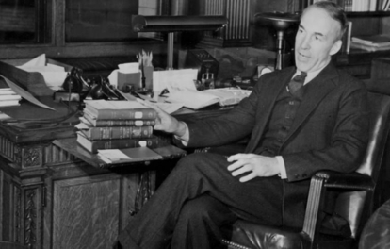
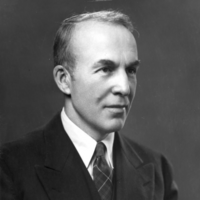
Archibald MacLeish (May 7, 1892– April 20, 1982) was an American poet, writer, and the Librarian of Congress. He is associated with the Modernist school of poetry. He received three Pulitzer Prizes for his work. MacLeish was born in Glencoe, Illinois. His father, Scottish-born Andrew MacLeish, worked as a dry goods merchant. His mother, Martha (née Hillard), was a college professor and had served as president of Rockford College. He grew up on an estate bordering Lake Michigan. He attended the Hotchkiss School from 1907 to 1911 before entering Yale University, where he majored in English, was elected to Phi Beta Kappa, and was selected for the Skull and Bones society. He then enrolled in Harvard Law School, where he served as an editor of the Harvard Law Review. In 1916, he married Ada Hitchcock. His studies were interrupted by World War I, in which he served first as an ambulance driver and later as a captain of artillery. His brother, Kenneth MacLeish was killed in action during the war. He graduated from law school in 1919, taught law for a semester for the government department at Harvard, then worked briefly as an editor for The New Republic. He next spent three years practicing law.
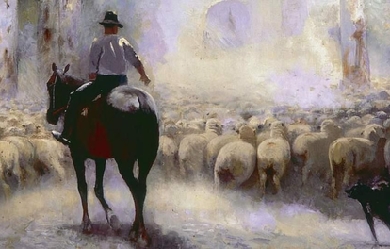
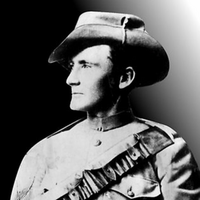
Harry “Breaker” Harbord Morant (9 December 1864– 27 February 1902) was an Anglo-Australian drover, horseman, bush poet, and military officer. While serving with the Bushveldt Carbineers during the Second Anglo-Boer War, Captain Morant was arrested and court-martialed for war crimes– one of the first such prosecutions in British military history. According to military prosecutors, Morant had retaliated for the death in combat of a fellow officer with the summary execution of nine Afrikaner prisoners-of-war. He was found guilty and sentenced to death. Captain Morant was then court-martialed for the murder of a Lutheran minister, Rev. Daniel Heese. The German Heese had witnessed the POW massacre, indignantly vowed to inform Morant’s commanding officer, and had been shot to death on the way to the British Army HQ at Pietersburg. Morant was acquitted of the Heese murder, but his sentence for the killing of the Boers was carried out by a firing squad drawn from the Queen’s Own Cameron Highlanders on 27 February 1902. Despite having left a written confession in his cell, Harry Morant has become a folk hero in modern Australia. His court-martial and death have been the subject of books, a stage play, and an award-winning Australian New Wave film adaptation by director Bruce Beresford. Many now regard Morant as a scapegoat or even as the victim of a judicial murder. Beresford has expressed regret that his film has contributed to this belief: “The film never pretended for a moment that they weren’t guilty. It said they are guilty. But what was interesting about it was that it analysed why men in this situation would behave as they had never behaved before in their lives. It’s the pressures that are put to bear on people in war time... Look at all the things that happen in these countries committed by people who appear to be quite normal. That was what I was interested in examining. I always get amazed when people say to me that this is a film about poor Australians who were framed by the Brits.” Early life It appears that Morant created a number of romantic legends about his past. He was often described as “well-educated” and claimed to have been born in 1865 at Bideford, Devon, England, and to have been the illegitimate son of Admiral Sir George Digby Morant of the Royal Navy; a claim repeated as fact by later writers, although the admiral denied it. It is alleged that Morant entrusted his cigarette case and other personal belongings to Major Bolton, who appeared for the prosecution during his courts-martial with the words “see that my family gets them”. Years later, when Bolton’s daughter allegedly tried to hand them to the family of Sir George, she was told Morant was not related to them. It has been suggested that the young Morant came into the care of a wealthy Scottish author, soldier, hunt-master and golfer, George Whyte-Melville. Like other stories there is no evidence for this theory. The results of enquiries made in 1902 by both The Northern Miner and The Bulletin newspapers identified him as Edwin Henry Murrant who had arrived at Townsville in Queensland on the SS Waroonga in 1883. Murrant was born at Bridgwater in Somerset, England, in December 1864, the son of Edwin Murrant and Catherine (née Riely). Edwin and Catherine were Master and Matron of the Union Workhouse at Bridgewater and after Edwin died in August 1864, four months before the birth of his son, Catherine continued her employment as Matron until her retirement in 1882. She died in 1899 when Morant was in Adelaide, South Australia, preparing to leave for South Africa. Morant settled in outback Queensland, and over the next 15 years, working in Queensland, New South Wales and South Australia, the charismatic roustabout made a name for himself as a hard-drinking, womanising bush poet and gained renown as a fearless and expert horseman. Harry Breaker Morant was one of the few horsemen who managed to ride the notorious buckjumper Dargin’s Grey in a battle that became a roughriding legend. Morant worked in a variety of occupations; he reportedly traded in horses in Charters Towers, then worked for a time on a newspaper at Hughenden in 1884, but there are suggestions that he left both towns as a result of debts. He then drifted around for some time until he found work as a bookkeeper and storeman on the Esmaralda cattle station. On 13 March 1884, Morant married Daisy May O’Dwyer, who later became famous as an anthropologist. The Morants separated soon after and never formally divorced; Daisy reportedly threw him out after he failed to pay for the wedding and then stole some pigs and a saddle. He then worked for several years as an itinerant drover and horse-breaker, as well as writing his popular bush ballads, becoming friendly with famed Australian bush poets Henry Lawson, Banjo Paterson and William Ogilvie. Military career At the time Morant volunteered for military service (in 1899), the formal federation of the Commonwealth of Australia was still two years away. Australia consisted of separate self-governing colonies, each of which was still subject to the British Crown. The population still included many British immigrants, and most Australians still had strong ties to “The Mother Country”. Consequently, thousands of Australian men volunteered to fight for Britain in the Second Boer War, which pitted British colonial forces against the Boer Republics in South Africa. Evidently, seeing this as a chance to return to England and redeem himself in the eyes of the family he had left 16 years before, Morant enlisted with the Second Contingent of the South Australian Mounted Rifles. While in Adelaide, Morant was reportedly invited to visit the summer residence of the South Australian governor, Lord Tennyson. After completing his training, he was appointed lance corporal and his regiment embarked for the Transvaal on 27 February 1900. In many respects, the terrain and climate of South Africa is remarkably similar to that of outback Australia, so Morant was in his element. His superb horsemanship, expert bush skills, and educated manner soon attracted the attention of his superiors. South Australian Colonel Joseph Gordon recommended him as a dispatch rider to Bennet Burleigh, the war correspondent of the London Daily Telegraph; the job reportedly provided the debonair Morant with ample opportunity to visit the nearby hospital and dally with the nurses. The statement of service Morant tendered at his trial is quoted, apparently verbatim, in the book written by his friend and colleague, George Witton. According to that account, Morant was commissioned as a lieutenant in the Bushveldt Carbineers (BVC) on 1 April 1901. Prior to that, he had served in the South Australian Second Contingent for nine months, during which time he was promoted to the rank of sergeant. Subsequently, he returned to Devon, England for a period of time. In March 1900, Morant carried dispatches for the Flying Column to Prieska, under Colonel Lowe, 7th D.G., who was in the general advance to Bloemfontein and took part in the engagements of Karee Siding and Kroonstadt, and other engagements with Lord Roberts until the entry into Pretoria. Morant was at Diamond Hill and was then attached to General French’s staff, Cavalry Brigade, as war correspondent with Bennet Burleigh of the London Daily Telegraph. He accompanied that column through Middelburg and Belfast to the occupation of Barberton. At this point, he took leave and returned to Devon, England for six months. Here he became close friends with Captain Hunt, and the two of them became engaged to a pair of sisters. Hunt, who was still “signed on”, returned to South Africa to take command of a squadron (?) in the Bushveldt Carbineers, whereas Morant (who had intended that his military service come to an end) followed him shortly after not having found the forgiveness he sought in England. Originally returning to take up a commission in Baden Powell’s Transvaal Constabulary, he was convinced by Hunt to instead accept a commission in the BVC. Boer guerrilla campaign, 1901–1902 Following their defeats on the battlefield during 1899–1900, the Boer Commandos embarked on a guerrilla campaign against both British and Commonwealth forces. In response, Lord Kitchener, the British commander in South Africa assembled and deployed a number of irregular regiments to combat Boer commando units and protect British interests in the region. On his return from leave, Morant joined one of these irregular units, the Bushveldt Carbineers, a 320-strong regiment that had been formed in February 1901 under the command of an Australian, Colonel R.W. Lenehan. Following his friend’s lead, Captain Hunt joined the BVC soon after. The regiment, based in Pietersburg, 180 miles (290 km) north of Pretoria, saw action in the Spelonken region of the Northern Transvaal during 1901–1902. The region was remote, wild and dangerous and was also in a heavily malarial area. Because of this, the British had difficulty in finding troops and as a result, many Commonwealth soldiers enlisted. About forty percent of the men in the BVC were Australians, but the regiment also included about forty surrendered Boers ("joiners") who had been recruited from the internment camps, and according to Witton, their presence was greatly resented by the Australians. The garrison was soon divided into two columns; one, under the command of Lieutenant Morant, operated in the Strydpoort district, about 30 miles (48 km) south-east of Pietersburg. BVC A Company moved north under the command of Captain James Huntley Robertson and established a command post at Sweetwaters Farm, about 90 miles (140 km) north of Pietersburg, which they renamed Fort Edward. The other ranking officer at the fort was Captain Alfred Taylor, an Anglo-Irish officer with the Army’s Intelligence Department. He had been selected and sent to Spelonken by Kitchener because of his knowledge of “the natives”. In his book, Witton wrote that as far as the Africans were concerned: On 2 July 1901, Captain Taylor received word that a group of six Boers were coming in to the fort, accompanied by two covered wagons and a large herd of cattle. In response, the Captain sent a runner to summon troops from the Bushveldt Carbineers. Upon their arrival, Cap. Taylor ordered a party under BVC Major K.C.B. Morrison to intercept the six Boers. He instructed him to “make it look like a fight”, ignore a white flag if one was flown, and take no prisoners. After listening, Maj. Morrison turned to Cap. Robertson and asked whether he should obey Taylor’s orders. Robertson replied, “Certainly, he is commanding officer at Spelonken.” In reality, while four of the Boer group were members of the Zoutpansberg Commando, all were unarmed, suffering from malaria, and on the way to the Swiss Mission Hospital at Valdezia. Upon being intercepted by Morrison’s patrol, all six Boers and the two Native African herdsmen accompanying them were shot in the heads and necks and left un-buried. The cash box, gold bars, and cattle they carried were seized by BVC Lt. Peter Handcock and never seen again. The victims’ known names were: Jan F. Vercuil, F.J.G. Potgieter, Jan J. Geyser, P.J. Geyser, J.C. Greyling, and M. van Heerden. Upon their return to Fort Edward, BVC Trooper B.J. van Buuren, an Afrikaner “joiner”, was seen pointing out the members of Maj. Morrison’s patrol to a group of Boer women and children who were being held for transport to the British concentration camp at Pietersburg. Believing that Trooper van Buuren had told the women in Afrikaans of the recent massacre, Capt. Robertson ordered Lt. Handcock to “attend to the matter”. On 4 July 1901, Lt. Handcock led a handpicked patrol of four men, including Trooper van Buuren, from Fort Edward to “investigate Boer activity close by”. In a subsequent deposition, Trooper M.A. Churton described having seen Lt. Handcock ride up behind Trooper van Buuren and shoot him three times in the back. Lt. Handcock then allegedly rode up to Trooper Churton and said, “Keep a sharp lookout. We just lost a man back there.” Meanwhile, news had reached military police in Pietersburg that a Spelonken woman had accused Capt. Robertson of sexual assault. In response, Robertson was recalled to HQ and given a choice between court martial and resigning his commission. He chose the latter option and left the British Armed Forces. Events leading to Morant’s arrest The exact sequence and nature of the events leading up to Morant’s arrest and trial are still disputed, and accounts vary considerably. While it seems clear that some members of the BVC were responsible for shooting Boer POWs and civilian noncombatants, the precise circumstances of these killings and the identities of those responsible will probably never be known for certain. The following account is drawn mainly from the only surviving eyewitness source, and the 1907 book Scapegoats of the Empire by Lieutenant George Witton, one of the three Australians sentenced to death for the alleged murders and the only one to escape execution. With Hunt now commanding the detachment at Fort Edward, discipline was immediately re-imposed by Lieutenant Morant and Lieutenant Handcock, but this was resisted by some. In one incident, several members of a supply convoy led by Lieutenant Picton looted the rum it was carrying, resulting in their arrest for insubordination and for threatening to shoot Picton. They escaped to Pietersburg, but Captain Hunt sent a report to Colonel Lenehan, who had them detained. When the matter was brought before Colonel Hall, the commandant of Pietersburg, he ordered the offenders to be discharged from the regiment and released. In his book, Witton explicitly accused these disaffected troopers of being responsible for “the monstrous and extravagant reports about the BVC which appeared later in the English and colonial press.” Back at Fort Edward, the seized livestock was collected and handed over to the proper authorities and the stills were broken up, but according to Witton, these actions were resented by the perpetrators, and as a result Morant and Handcock were “detested” by certain members of the detachment. Witton arrived at Fort Edward on 3 August with Sergeant Major Hammett and 30 men, and it was at this point that he met Morant and Handcock for the first time. Death of Captain Hunt The pivotal event of the Morant affair took place two days later, on the night of 5 August 1901. Captain Hunt led a 17-man patrol to a Boer farmhouse called Duivelskloof (Devil’s Gorge), about 80 miles (130 km) south of the fort, hoping to capture its owner, the Boer commando leader Veldtcornet Barend Viljoen. Hunt also had some 200 armed native African irregulars with him, and Witton claimed that although “those in authority” denied the use of African auxiliaries, they were in fact widely used and were responsible for “the most hideous atrocities”. Hunt had been told that Viljoen had only 20 men with him. The Boers surprised the British as they approached. During the ensuing skirmish, both Barend Viljoen and his brother Jacob Viljoen were killed. Witnesses later testified that Captain Hunt was wounded in the chest while firing through the windows and Sergeant Frank Eland was killed while trying to recover his body. Witnesses later testified that Hunt was still alive when the British retreated. When news of Hunt’s death reached the fort, it had a profound effect on Morant; Witton said he became “like a man demented”. Morant immediately ordered every available man out on patrol, broke down while addressing the men, and ordered them to avenge the death of their captain and “give no quarter”. Significantly, Morant did not see Hunt’s body himself; according to Witton, Morant arrived about an hour after the burial. He questioned the men about Hunt’s death and, convinced that his friend had been murdered in cold blood, he again vowed to give no quarter and take no prisoners. Witton recounted that Morant then declared that he had, on occasion, ignored Hunt’s order to this effect in the past, but that he would carry it out in the future. Retaliation The following day, after leaving a few men to guard the mission (which the Boers threatened to burn in reprisal for harbouring the British), Morant led his unit back to the Viljoen farm. It had been abandoned, so they tracked the retreating Boers all day, sighting them just on dusk. As the Australians closed in, the hot-headed Morant opened fire too early and they lost the element of surprise, so most of the Boers escaped. They did, however, capture one commando called Visser, wounded in the ankles so that he could not walk. The next morning, as Morant and his men continued their pursuit, a native runner brought a message that the lightly manned Fort Edward was in danger of being attacked by the Boers, so Morant decided to abandon the chase. At this point, he searched and questioned Visser and found items of British uniform, including a pair of trousers which he believed was that of Hunt’s, but was later proved to be of much older origin; he then told Witton and others that he would have Visser shot at the first opportunity. When they stopped to eat around 11 a.m. Morant again told Witton that he intended to have Visser shot, quoting orders “direct from headquarters” and citing Kitchener’s recent alleged “no prisoners” proclamation. He called for a firing party, and although some of the men initially objected, Visser was made to sit down on an embankment (he could not stand), and was shot. After being shot, Visser was still alive, and Morant ordered Picton to administer a coup-de-grace with pistol shots to the head. On the return journey to the fort, Morant’s unit stopped for the night at the store of a British trader, a Mr Hays, who was well known for his hospitality. After they left, Hays was raided by a party of Boers who looted everything he owned. When Morant and his men arrived back at Fort Edward, they learned that a convoy under Lieutenant Neel had arrived from Pietersburg the previous day, just in time to reinforce Captain Taylor against a strong Boer force that attacked the fort. During the encounter, one Carbineer was wounded and several horses were shot and it was at this time that Taylor had a native shot for refusing to give him information about the Boers’ movements. Neel and Picton then returned to Pietersburg. Other killings followed: on 23 August, Morant led a small patrol to intercept a group of eight prisoners from Viljoen’s commandos who were being brought in under guard; Morant ordered them to be taken to the side of the road and summarily shot. The South African born German missionary Reverend Predikant C.H.D. Heese spoke to the prisoners prior to the shooting. About a week later, reports began to circulate that Reverend Heese had been found shot along the Pietersburg road about 15 miles (24 km) from the fort on his way to Pietersburg to report the activities of Morant and his group to the British authorities. At his later court-martial, it was proved that Morant himself had shot Heese in an effort to prevent him from disclosing the murder of the Boer prisoners-of-war. Shortly afterwards, acting on a report that three armed Boer commandos were heading for the fort, Morant took Handcock and several other men to intercept them and after the Boers surrendered with a white flag, they were taken prisoner, disarmed and shot. Later the same day, Major Lenehan arrived at Fort Edward for a rare visit. Morant persuaded Lenehan to let him lead a strong patrol out to search for a small Boer unit led by Field-cornet Kelly, an Irish-Boer commando whose farm was in the district. Kelly had fought against the British in the main actions of the war, and after returning to his home he had become a commando rather than surrender. Morant’s patrol left Fort Edward on 16 September 1901 with orders from Lenehan that Kelly and his men were to be captured and brought back alive if possible. Covering 130 miles (210 km) in a week of hard riding, they left their horses 2 miles (3.2 km) from Kelly’s laager and went the rest of the way on foot. In the early hours of the next morning, Morant’s patrol charged the laager, this time taking the Boers completely by surprise; Morant himself arrested Kelly at gunpoint at the door of his tent. A week later, they returned to Fort Edward with the Kelly party and then escorted them safely to Pietersburg. The British commandant, Colonel Hall, personally sent Morant a message congratulating him on the success of his mission, after which Morant took two weeks leave. Arrests Then, in mid-October, the Spelonken detachment was suddenly recalled to Pietersburg and Fort Edward was abandoned until March 1902. On 24 October 1901, Colonel Hall ordered the arrest of six members of the Carbineers. Four were Australians: Major Lenehan and Lieutenants Handcock, Witton and Hannam; the other two, Captain Taylor and Lieutenant Picton, were English. When Morant returned from leave in Pietersburg, he too was arrested, although no charges were laid at the time. A Court of Enquiry into the affairs of the Bushveldt Carbineers followed. The War Office subsequently stated that, on 8 October 1901, some members of the BVC who had been discharged at Pietersburg on the expiration of their service had reported the irregular actions of the officers at Fort Edward over the preceding months. The men were held in solitary confinement within the garrison, in spite of vigorous protests by Lenehan; he even wrote directly to Kitchener to ask that he be allowed to inform the Australian government of his position, but Kitchener ignored the request. Meanwhile, the Court of Enquiry held daily hearings, taking evidence from witnesses about the conduct of the BVC. Two weeks later, the prisoners were finally informed of the charges against them; in December, they were again brought before the panel and told that they were to be tried by court-martial. The panel found that there were no charges to answer in the cases of Hannam and Sergeant Major Hammett. On hearing of the arrests, Kitchener’s Chief of Police, Provost Marshall Robert Poore, remarked in his diary, “... if they had wanted to shoot Boers they should not have taken them prisoner first”—a view later ruefully echoed in his book by George Witton. While it is certain that Morant and others did kill some prisoners, their real “mistake” in terms of their court-martial was that they killed the Boers after capturing and disarming them after they surrendered with a white flag. As Poore noted in his diary, had they shot them before they surrendered, the repercussions might well have been considerably less serious, since they could have claimed (truthfully or otherwise) that they had been killed in battle, rather than murdered after being taken prisoner. Just before the court-martial, Colonel Hall was removed from his post at Pietersburg and transferred to India. The BVC were disbanded and replaced by a new regiment called the Pietersburg Light Horse. On 15 January 1902, the accused were finally given copies of the charges against them and informed that they would be defended by Major James Francis Thomas (1861–1942), who in civilian life had been a solicitor in Tenterfield, New South Wales.[3][4] The court-martial began the following day. Court-martial The court-martial of Morant and his co-accused began on 16 January 1902 and was conducted in several stages. Two main hearings were conducted at Pietersburg in relatively relaxed conditions; one concerned the shooting of Visser, the other the “Eight Boers” case. A large number of depositions by members of the BVC were made, giving damning evidence against the accused. For example, a Trooper Thompson stated that, on the morning of the 23rd (1901), he saw a party of soldiers with eight Boers: “Morant gave orders, and the prisoners were taken off the road and shot, Handcock killing two with his revolver. Morant later told me that we had to play into his hands, or else they would know what to expect.” A Corporal Sharp said that he "would walk 100 miles barefoot to serve in a firing squad to shoot Morant and Handcock.” Soon after the second hearing, the prisoners were put in irons, taken to Pretoria under heavy guard and tried on the third main count, the killing of Reverend Heese. Although acquitted of killing Reverend Heese, Morant and his co-accused were quickly sentenced to death on the other two charges. Morant and Handcock were shot within days of sentencing, while Witton’s sentence was commuted to life imprisonment by Lord Kitchener. Kitchener personally signed Morant and Handcock’s death warrants. The Field Marshal was absent on tour when the executions took place. Execution During the day of 26 February, Morant and Handcock were visited by a distraught Major Thomas; Witton says that news of the impending execution had “almost driven him crazy”. Thomas then rushed off to find Kitchener and plead with him, but was informed by Colonel Kelly that the Commander-in-Chief was away and was not expected back for several days. Thomas pleaded with Kelly to have the executions stayed for a few days until he could appeal to the King, but was told that the sentences had already been referred to England—and confirmed—and that there was “not the slightest hope” of a reprieve; Morant and Handcock “must pay for what he did”. When asked if he wanted to see a clergyman, Morant replied indignantly, “No! I’m a Pagan!” On hearing this, Handcock asked, “What’s a Pagan?” and after hearing the explanation, declared “I’m a Pagan too!” As the afternoon wore on, all the prisoners could clearly hear the sound of coffins being built in the nearby workshop. At 16:00 hours, Witton was told he would be leaving for England at five the following morning. That night, Morant, Picton, Handcock and Witton had a last supper together; at Morant’s request, he and Handcock were allowed to spend their last night in the same cell. Morant spent most of the night writing and then penned a final sardonic verse, and a confession which read To the Rev. Canon Fisher Pretoria The night before we’re shot We shot the Boers who killed and mutilated our friend (the best mate I had on Earth) Harry Harbord Morant Peter Joseph Handcock At 05:00 hours on 27 February, Witton was taken away and was allowed to say a brief farewell to Morant and Handcock, but was only allowed to see them through the small gate in the cell door and clasped hands. Shortly before 06:00 hours, Morant and Handcock were led out of the fort at Pretoria to be executed by a firing squad from the Queen’s Own Cameron Highlanders. Both men refused to be blindfolded; Morant gave his cigarette case to the squad leader, and his last words were reported as: “Shoot straight, you bastards! Don’t make a mess of it!”. A contemporary report from The Argus on 3 April 1902, however, has his last words as “Take this thing (the blindfold) off”, and on its removal, “Be sure and make a good job of it!”. Witton wrote that he was by then at Pretoria railway station and heard the volley of shots that killed his comrades. However, Poore, who attended the execution, wrote in his diary that he put Witton and Lieutenant Picton on the train that left at 05:30 hours. Thus, Witton would have been several miles on the way to Cape Town when the execution occurred. Aftermath of the execution Due to British military censorship, reports of the trial and execution did not begin to appear in Australia until the end of March 1902. The Australian government and Lieutenant Handcock’s wife, who lived in Bathurst with their three children, only learned of Handcock and Morant’s death from the Australian newspapers weeks after their executions. After learning of his sentence, Lieutenant Witton arranged to send two telegrams, one to the Australian government representative in Pretoria and the other to a relative in Victoria, but despite assurances from the British, neither telegram was ever received. The Australian government demanded an explanation from Kitchener who, on 5 April 1902, sent a telegram to the Australian Governor-General, which was published completely in the Australian press. It reads as follows: “In reply to your telegram, Morant, Handcock and Witton were charged with twenty separate murders, including one of a German missionary who had witnessed other murders. Twelve of these murders were proved. From the evidence it appears that Morant was the originator of these crimes which Handcock carried out in cold-blooded manner. The murders were committed in the wildest parts of the Transvaal, known as Spelonken, about eighty miles north of Pretoria, on four separate dates namely July 2, August 11, August 23, and September 7. In one case, where eight Boer prisoners were murdered, it was alleged to have been done in a spirit of revenge for the ill treatment of one of their officers– Captain Hunt– who was killed in action. No such ill-treatment was proved. The prisoners were convicted after a most exhaustive trial, and were defended by counsel. There were, in my opinion, no extenuating circumstances. Lieutenant Witton was also convicted but I commuted the sentence to penal servitude for life, in consideration of his having been under the influence of Morant and Handcock. The proceedings have been sent home.” News of the executions excited considerable public interest in the UK and a summary of the trial was published in The Times on 18 April 1902, but the British government announced in the House of Commons that, in keeping with normal practice, the court-martial proceedings would not be made public. The official transcripts of the court-martial reportedly disappeared soon afterwards. The Treaty of Vereeniging was signed on 31 May 1902. George Witton was transported to naval detention quarters England and then to Lewes prison in Sussex. Some time later he was transferred to the prison at Portland, Dorset, and was released after serving twenty-eight months. His release was notified to the British House of Commons on 10 August 1904. On his release he returned to Australia and for a while lived in Lancefield, Victoria, where he wrote his controversial book about the Morant case. He published it in 1907 under the provocative title Scapegoats of the Empire. The book was reprinted in 1982 following the success of the 1980 film Breaker Morant. Witton died in Australia in 1942. Alfred Taylor became a Native Commissioner in Rhodesia and a Member of Parliament and died in 1941. Literature on Morant and conflicting theories about the case The story of Morant’s life, exploits, trial and execution have been examined in several books and numerous press and internet articles, but as noted above, each account varies very considerably from the other in both the facts presented and their interpretation. There are facts intermingled with fiction. The most important primary source, the official records of the court-martial, vanished following the trial and their location remains a mystery. A report on the case from Kitchener to the Australian Governor-General (published in the Australian press on 7 April 1902) quotes Kitchener as saying that “the proceedings have been sent home” [i.e. to England]. Whatever their actual fate, the transcripts have not been seen since the trial and evidently not even the Australian government was granted access to them. In the 'Afterword’ to the 1982 reprint of Witton’s book, G.A. Embleton states that “ .. the British authorities have been approached by many researchers eager to examine the transcripts thought to be held by the War Office. Invariably these requests have been met with denials that the documents exist or pronouncements to the effect that they cannot be released until the year 2002... It now appears that the papers never reached England... (it was) recently announced that the court-martial papers had been discovered in South Africa...” A comprehensive record of the trial of Morant and Handcock, complete with a large number of depositions by members of the BVC and other witnesses of the deeds of Morant and Handcock, appears in Arthur Davey’s “Breaker Morant and the Bushveldt Carbineers” (Van Riebeeck Society, Cape Town 1987). In 2012, South African historian Charles Leach published the book The Legend of Breaker Morant is DEAD and BURIED: A South African version of the Bushveldt Carbineers in the Zoutpansberg, May 1901– April 1902. Based upon extensive research, Leach had complete access to unpublished South African sources and the papers of the Viljoen and Heese families. Joe West, a British Bushveldt Carbineers researcher, wrote in response: “Charles Leach’s impressive research has revealed that the crimes of Morant and his associates were worse than originally thought. In today’s day and age Morant and Handcock plus several others would be arraigned before a War Crime Tribunal.” Primary sources In the absence of the original trial records, three primary sources remain. The first is the report of the trial printed in The Times in April 1902; the second is George Witton’s account of the events of 1901–02, contained in his book Scapegoats of the Empire. The third and most recent is a letter about the case, written by Witton to Major Thomas in 1929, which was kept secret at Witton’s request until 1970. In it, Witton suggests that although Handcock broke down and confessed to the crimes, he did so under duress. Other accounts Wilcox states the next important book in creating the Morant myth was Cutlack’s Breaker Morant (1962), a short book as much a cartoon version of reality as The Bulletin once presented. (Wilcox, p. 363.) Cutlack’s story, said Wilcox, was based on Witton’s Scapegoats and Frank Fox’s Breaker Morant. The 1976 book The Australians At The Boer War by Australian writer R.L. Wallace gives a concise and reasonably detailed account of Morant’s military career, trial and execution although it contains almost no information about Morant’s earlier life and omits a number of significant details contained in Witton’s account of the events leading up to Morant’s trial. However, Wallace was writing an overall account of the Australians’ role in South Africa, not the life of Morant, Handcock or Witton. The most widely known book is the best-selling Australian novel The Breaker by Kit Denton, first published in 1973 and inspired by Denton’s meeting and conversation with a Boer War veteran who had known Morant. Wilcox suggested this book is a follow-on from Cutlack’s book and helped establish the myth. (Wilcox, p. 363.) However, Denton claimed that Morant and Handcock were executed in Pietersburg and buried near that spot. This mistake appeared in his book as late as 1981 (7th edition, p. 268), and is a possible reason as to why there is confusion around the location of the execution, i.e. Pretoria or Pietersburg. Kenneth Ross’s 1978 highly successful and widely acclaimed play Breaker Morant: A Play in Two Acts (ISBN 0-7267-0997-2), was adapted by Ross and Bruce Beresford into Beresford’s 1980 film Breaker Morant. The film was nominated for the 1980 Academy Award for the screenplay adapted from another source. In 1988 in the small town of Burra, South Australia, where Bruce Beresford’s film 'Breaker Morant’ was shot, David Jennings organized a 'Retrial of Morant, Handcock and Witton’. The townsfolk staged the retrial and generated the imagination of people from all over the world. Archival material which had been gathering dust in attics flooded in. Although the three Justices of the Peace who presided over the 'Retrial’ found all three not guilty on the balance of probabilities that Kitchener had issued the orders to execute Boers in khaki only a diary extract from a deceased Australian Staff Officer on Kitchener’s staff indicated that he had verbally instructed Captain Hunt and the Bushveldt Carbineers to execute prisoners, especially those wearing khaki. Legacy Although it is generally accepted that Morant and/or others in his regiment were responsible for the deaths of a number of Boer commandos, historical opinion is still divided over the central questions of the case—how many Boers were killed, by whom were they killed, and on whose orders? In his book, Born to Fight, Speed has photos of a number of Canadian Scouts wearing black feathers (pp. 105 & 119.), a symbol that they would shoot any Boer captured under arms. Morant’s supporters, on the other hand, argue that he and Handcock were unfairly singled out for punishment even though many other British soldiers were known to have carried out summary executions of Boer prisoners. In their view, the two Australians were made scapegoats by the British, who were intent on concealing the existence of the “take no prisoners” policy against Boer insurgents—a policy which, they claim, had been promulgated by Kitchener himself. However, Hamish Paterson, a South African military historian and a member of the Military History Society, has pointed out that the Bushveldt Carbineers were a British Imperial unit, not an Australian one: technically, the two “Aussies” were British officers. A 2002 book promoted the “scapegoat” argument. It said that while Morant and the others probably committed some crimes and may well have deserved disciplinary action, there is now persuasive evidence from several sources to show that the Kitchener 'no prisoners’ order did indeed exist, that it was widely known among both the British and Australian troops and was carried out by many disparate units. It also asserted that the court-martial was fundamentally flawed in its procedures. The graves of Morant and Handcock were left unattended for many years, but after the release of Beresford’s film it became a popular place of pilgrimage for Australian tourists. In June 1998 the Australian Government spent $1,500 refurbishing the grave site with a new concrete slab. The marble cross which stood over the grave had been vandalised, as had many other gravestones nearby. A series of monuments now mark the locations of some of the incidents, including that of the night attack, and the site of the mass grave of eight burghers. Petition In 2002, a group of Australians travelled to South Africa and held a service at the Pretoria graveside to commemorate the execution on the morning of the 100th anniversary. The service was also attended by the Australian High Commissioner to South Africa. The group left a new marker on the grave. A petition to pardon Morant and Handcock was sent to Queen Elizabeth II in February 2010. The petition has been severely criticised in South Africa, specifically by descendants of the Viljoen brothers who were killed in the skirmish with Hunt and Eland, and the descendants of the family of Rev. Heese. Hamish Paterson states: "I don’t think they [the Australian supporters of a Morant pardon] have actually considered what Morant was convicted of. Let’s start off with the laws of war. If for example, we have a surrender. You want to surrender and I don’t accept your surrender, so I choose not to accept it, that I’m entitled to do. [...] However, the situation changes dramatically once I accept your surrender, then I must remove you from the battlefield to a POW camp and keep you safe. If, for example, Kitchener said, “take no prisoners,” that was very different from “shoot prisoners!” So Morant and Handcock made two very basic errors: Once you’ve accepted the surrender, you take them to the railway line and get them shipped off to Bermuda, or wherever. At that point, the sensible thing to do was to ship them off to a POW camp. The next error was to shoot these guys in front of a neutral witness, and then you kill the witness. These are a series of terrible errors of judgement. Because they killed a German missionary, the Kaiser (became) involved. [...] Technically, the two “Aussies” were British officers. The problem was you were dealing with an unstable set-up in the BVC . It had just been formed. I don’t see a regular Australian unit behaving that way. I rather suspect why no British guys were shot was that they were either regular army or militia, or yeomanry, all of which are very unlikely to actually shoot prisoners. I think no British were shot because they hadn’t made the mistake of shooting prisoners who’d already surrendered.” Jim Unkles, an Australian lawyer, submitted two petitions, one to Queen Elizabeth II, and the other to the House of Representatives Petitions Committee in October 2009 to review the convictions and sentences of Morant, Handcock and Witton. The petitions were referred to the British Crown by the Australian Attorney General. On Monday, 27 February 2012, in a speech delivered to the House of Representatives on the 110-year anniversary of the sentencing of the three men, Alex Hawke, the Member for Mitchell (NSW), described the case for the pardons as “strong and compelling”. In November 2010 a statement from the Ministry of Defence in the UK said that the appeal had been rejected. “After detailed historical and legal consideration, the Secretary of State has concluded that no new primary evidence has come to light which supports the petition to overturn the original courts-martial verdicts and sentences”, the statement said. The decision was supported by Australian military historian Craig Wilcox and by South African local historian Charles Leach, while Jim Unkles continues to campaign for a judicial inquiry. In October 2011 Robert McClelland claimed on ABC radio that the executed men had no legal representation at the Courts Martial. This is untrue since Major J.F. Thomas represented them. On 12 December 2011 Robert McClelland was replaced as Attorney General with Nicola Roxon. [5] On 9 May 2012, Nicola Roxon indicated that the Australian government would not be pursuing the issue further with the British, on the basis that there was no doubt that the three men had committed the killings for which they were convicted. The Australian government’s position is that pardons are only appropriate where an offender is both “morally and technically innocent” of the offence. Roxon also noted the seriousness of the offences involved, explaining that “I consider that seeking a pardon for these men could be rightly perceived as ‘glossing over’ very grave criminal acts.” [6] McClelland, who claims to have reviewed the case, for which no transcripts exist, has yet to provide reasons for his popular view that the Englishman Morant and Australians Handcock and Witton did not receive a fair trial. References Wikipedia—https://en.wikipedia.org/wiki/Breaker_Morant

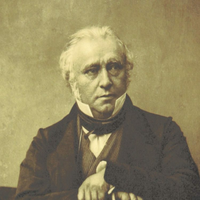
Thomas Babington Macaulay, 1st Baron Macaulay, PC (25 October 1800– 28 December 1859) was a British historian and Whig politician. He wrote extensively as an essayist and reviewer; his books on British history have been hailed as literary masterpieces. He was a member of the Babington family by virtue of his aunt’s marriage to Thomas Babington. Macaulay held political office as the Secretary at War between 1839 and 1841, and the Paymaster-General between 1846 and 1848. He played a major role in introducing English and western concepts to education in India. He supported the replacement of Persian by English as the official language, the use of English as the medium of instruction in all schools, and the training of English-speaking Indians as teachers. In his view, Macaulay divided the world into civilised nations and barbarism, with Britain representing the high point of civilisation. In his Minute on Indian Education of February 1835, he asserted, “It is, I believe, no exaggeration to say that all the historical information which has been collected from all the books written in the Sanskrit language is less valuable than what may be found in the most paltry abridgement used at preparatory schools in England”. He was wedded to the Idea of Progress, especially in terms of the liberal freedoms. He opposed radicalism while idealising historic British culture and traditions. Early life Macaulay was the eldest child of Zachary Macaulay, a Scottish Highlander, who became a colonial governor and abolitionist, and Selina Mills of Bristol, a former pupil of Hannah More. Thomas Macaulay was born in Leicestershire, England, where he was noted as a child prodigy. As a toddler, gazing out of the window from his cot at the chimneys of a local factory, he is reputed to have asked his father whether the smoke came from the fires of hell. He was educated at a private school in Hertfordshire and at Trinity College, Cambridge. Whilst at Cambridge he wrote much poetry and won several prizes, including the Chancellor’s Gold Medal in June 1821. In 1825 he published a prominent essay on Milton in the Edinburgh Review. He studied law and in 1826 he was called to the bar but showed more interest in a political than a legal career. Macaulay, who never married and had no children, was once rumoured to have fallen in love with Maria Kinnaird, the wealthy ward of “Conversation” Sharp (who was a hat-maker, banker, merchant, poet, critic and British politician). But in fact, Macaulay’s strongest emotional ties were to his youngest sisters, Margaret who died while he was in India, and Hannah. As Hannah grew older, he formed the same close attachment to Hannah’s daughter Margaret, whom he called “Baba”. Macaulay retained a passionate interest in classical literature throughout his life, and prided himself on his knowledge of Ancient Greek literature. He likely had an eidetic memory. While in India, he read every ancient Greek and Roman work that was available to him. In his letters, he describes reading the Aeneid whilst on vacation in Malvern in 1851, and being moved to tears by the beauty of Virgil’s poetry. He also taught himself German, Dutch, and Spanish, and remained fluent in French. Political career In 1830 the Marquess of Lansdowne invited Macaulay to become Member of Parliament for the pocket borough of Calne. His maiden speech was in favour of abolishing the civil disabilities of the Jews in the UK. Macaulay made his name with a series of speeches in favour of parliamentary reform. After the Great Reform Act of 1832 was passed, he became MP for Leeds. In the Reform, Calne’s representation was reduced from two to one; Leeds had never been represented before, but now had two members. Though proud to have helped pass the Reform Bill, Macaulay never ceased to be grateful to his former patron, Lansdowne, who remained a great friend and political ally. India (1834–1838) Macaulay was Secretary to the Board of Control under Lord Grey from 1832 until 1833. The financial embarrassment of his father meant that Macaulay became the sole means of support for his family and needed a more remunerative post than he could hold as an MP. After the passing of the Government of India Act 1833, he resigned as MP for Leeds and was appointed as the first Law Member of the Governor-General’s Council. He went to India in 1834, and served on the Supreme Council of India between 1834 and 1838. In his famous Minute on Indian Education of February 1835, Macaulay urged Lord William Bentinck, the Governor-General to reform secondary education on utilitarian lines to deliver 'useful learning’ - to Macaulay synonymous with Western culture. There was no tradition of secondary education in vernacular languages; the institutions then supported by the East India Company taught either in Sanskrit or Persian. Hence, he argued, “We have to educate a people who cannot at present be educated by means of their mother-tongue. We must teach them some foreign language.” Macaulay argued that Sanskrit and Persian were no more accessible than English to the speakers of the Indian vernacular languages and existing Sanskrit and Persian texts were of little use for 'useful learning’. In one of the less scathing passages of the Minute he wrote: I have no knowledge of either Sanscrit or Arabic. But I have done what I could to form a correct estimate of their value. I have read translations of the most celebrated Arabic and Sanscrit works. I have conversed both here and at home with men distinguished by their proficiency in the Eastern tongues. I am quite ready to take the Oriental learning at the valuation of the Orientalists themselves. I have never found one among them who could deny that a single shelf of a good European library was worth the whole native literature of India and Arabia. He also contended that Sanskrit or Arabic had any useful poetic heritage in the same famous Minutes on Indian Education. He wrote: It will hardly be disputed, I suppose, that the department of literature in which the Eastern writers stand highest is poetry. And I certainly never met with any orientalist who ventured to maintain that the Arabic and Sanscrit poetry could be compared to that of the great European nations. But when we pass from works of imagination to works in which facts are recorded and general principles investigated, the superiority of the Europeans becomes absolutely immeasurable. It is, I believe, no exaggeration to say that all the historical information which has been collected from all the books written in the Sanscrit language is less valuable than what may be found in the most paltry abridgments used at preparatory schools in England. In every branch of physical or moral philosophy, the relative position of the two nations is nearly the same. From the sixth year of schooling onwards, instruction should be in European learning, with English as the medium of instruction. This would create a class of anglicised Indians who would serve as cultural intermediaries between the British and the Indians; the creation of such a class was necessary before any reform of vernacular education. I feel... that it is impossible for us, with our limited means, to attempt to educate the body of the people. We must at present do our best to form a class who may be interpreters between us and the millions whom we govern, - a class of persons Indian in blood and colour, but English in tastes, in opinions, in morals and in intellect. To that class we may leave it to refine the vernacular dialects of the country, to enrich those dialects with terms of science borrowed from the Western nomenclature, and to render them by degrees fit vehicles for conveying knowledge to the great mass of the population. Macaulay’s minute largely coincided with Bentinck’s views and Bentinck’s English Education Act 1835 closely matched Macaulay’s recommendations (in 1836, a school named La Martinière, founded by Major General Claude Martin, had one of its houses named after him), but subsequent Governors-General took a more conciliatory approach to existing Indian education. His final years in India were devoted to the creation of a Penal Code, as the leading member of the Law Commission. In the aftermath of the Indian Mutiny of 1857, Macaulay’s criminal law proposal was enacted. The Indian Penal Code in 1860 was followed by the Criminal Procedure Code in 1872 and the Civil Procedure Code in 1909. The Indian Penal Code inspired counterparts in most other British colonies, and to date many of these laws are still in effect in places as far apart as Pakistan, Singapore, Bangladesh, Sri Lanka, Nigeria and Zimbabwe, as well as in India itself. In Indian culture, the term “Macaulay’s Children” is sometimes used to refer to people born of Indian ancestry who adopt Western culture as a lifestyle, or display attitudes influenced by colonisers ("Macaulayism")– expressions used disparagingly, and with the implication of disloyalty to one’s country and one’s heritage. In independent India, Macaulay’s idea of the civilising mission has been used by Dalitists, in particular by neoliberalist Chandra Bhan Prasad, as a “creative appropriation for self-empowerment”, based on the view that Dalit folk are empowered by Macaulay’s deprecation of Hindu civilisation and an English education. Return to British public life (1838–1857) Returning to Britain in 1838, he became MP for Edinburgh. He was made Secretary at War in 1839 by Lord Melbourne and was sworn of the Privy Council the same year. In 1841 Macaulay addressed the issue of copyright law. Macaulay’s position, slightly modified, became the basis of copyright law in the English-speaking world for many decades. Macaulay argued that copyright is a monopoly and as such has generally negative effects on society. After the fall of Melbourne’s government in 1841 Macaulay devoted more time to literary work, and returned to office as Paymaster-General in 1846 in Lord John Russell’s administration. In the election of 1847 he lost his seat in Edinburgh. He attributed the loss to the anger of religious zealots over his speech in favour of expanding the annual government grant to Maynooth College in Ireland, which trained young men for the Catholic priesthood; some observers also attributed his loss to his neglect of local issues. In 1849 he was elected Rector of the University of Glasgow, a position with no administrative duties, often awarded by the students to men of political or literary fame. He also received the freedom of the city. In 1852, the voters of Edinburgh offered to re-elect him to Parliament. He accepted on the express condition that he need not campaign and would not pledge himself to a position on any political issue. Remarkably, he was elected on those terms. He seldom attended the House due to ill health. His weakness after suffering a heart attack caused him to postpone for several months making his speech of thanks to the Edinburgh voters. He resigned his seat in January 1856. In 1857 he was raised to the peerage as Baron Macaulay, of Rothley in the County of Leicester, but seldom attended the House of Lords. Later life (1857–1859) Macaulay sat on the committee to decide on the historical subjects to be painted in the new Palace of Westminster. The need to collect reliable portraits of notable figures from history for this project led to the foundation of the National Portrait Gallery, which was formally established on 2 December 1856. Macaulay was amongst its founding trustees and is honoured with one of only three busts above the main entrance. During his later years his health made work increasingly difficult for him. He died of a heart attack on 28 December 1859, aged 59, leaving his major work, The History of England from the Accession of James the Second incomplete. On 9 January 1860 he was buried in Westminster Abbey, in Poets’ Corner, near a statue of Addison. As he had no children, his peerage became extinct on his death. Macaulay’s nephew, Sir George Trevelyan, Bt, wrote a best-selling “Life and Letters” of his famous uncle, which is still the best complete life of Macaulay. His great-nephew was the Cambridge historian G. M. Trevelyan. Literary works As a young man he composed the ballads Ivry and The Armada, which he later included as part of Lays of Ancient Rome, a series of very popular poems about heroic episodes in Roman history which he composed in India and published in 1842. The most famous of them, Horatius, concerns the heroism of Horatius Cocles. It contains the oft-quoted lines: Then out spake brave Horatius, The Captain of the Gate: "To every man upon this earth Death cometh soon or late. And how can man die better Than facing fearful odds, For the ashes of his fathers, And the temples of his gods?" His essays, originally published in the Edinburgh Review, were collected as Critical and Historical Essays in 1843. Historian During the 1840s, Macaulay began work on his most famous work, The History of England from the Accession of James the Second, publishing the first two volumes in 1848. At first, he had planned to bring his history down to the reign of George III. After publication of his first two volumes, his hope was to complete his work with the death of Queen Anne in 1714. The third and fourth volumes, bringing the history to the Peace of Ryswick, were published in 1855. At his death in 1859 he was working on the fifth volume. This, bringing the History down to the death of William III, was prepared for publication by his sister, Lady Trevelyan, after his death. Political writing Macaulay’s political writings are famous for their ringing prose and for their confident, sometimes dogmatic, emphasis on a progressive model of British history, according to which the country threw off superstition, autocracy and confusion to create a balanced constitution and a forward-looking culture combined with freedom of belief and expression. This model of human progress has been called the Whig interpretation of history. This philosophy appears most clearly in the essays Macaulay wrote for the Edinburgh Review and other publications, which were collected in book form and a steady best-seller throughout the 19th century. But it is also reflected in History; the most stirring passages in the work are those that describe the “Glorious Revolution” of 1688. Macaulay’s approach has been criticised by later historians for its one-sidedness and its complacency. Karl Marx referred to him as a 'systematic falsifier of history’. His tendency to see history as a drama led him to treat figures whose views he opposed as if they were villains, while characters he approved of were presented as heroes. Macaulay goes to considerable length, for example, to absolve his main hero William III of any responsibility for the Glencoe massacre. Winston Churchill devoted a four volume biography of the Duke of Marlborough to rebutting Macaulay’s slights of his ancestor, expressing hope 'to fasten the label “Liar” to his genteel coat-tails.' On the other hand, this outlook, together with his obvious love of his subject matter and of English civilisation, helps to place the reader within the age being described in a personal way that no cold neutrality could, and Macaulay’s History is generally recognised as one of the masterpieces of historical writing and a magisterial literary triumph only comparable as such to Gibbon and Michelet. Legacy as a historian The Liberal historian Lord Acton read Macaulay’s History of England four times and later described himself as “a raw English schoolboy, primed to the brim with Whig politics” but “not Whiggism only, but Macaulay in particular that I was so full of.” However, after coming under German influence Acton would later find fault in Macaulay. In 1880 Acton classed Macaulay (with Burke and Gladstone) as one “of the three greatest Liberals”. In 1883 he advised Mary Gladstone “that the Essays are really flashy and superficial. He was not above par in literary criticism; his Indian articles will not hold water; and his two most famous reviews, on Bacon and Ranke, show his incompetence. The essays are only pleasant reading, and a key to half the prejudices of our age. It is the History (with one or two speeches) that is wonderful. He knew nothing respectably before the seventeenth century, he knew nothing of foreign history, of religion, philosophy, science, or art. His account of debates has been thrown into the shade by Ranke, his account of diplomatic affairs, by Klopp. He is, I am persuaded, grossly, basely unfair. Read him therefore to find out how it comes that the most unsympathetic of critics can think him very nearly the greatest of English writers”. In 1885 Acton asserted that: “We must never judge the quality of a teaching by the quality of the Teacher, or allow the spots to shut out the sun. It would be unjust, and it would deprive us of nearly all that is great and good in this world. Let me remind you of Macaulay. He remains to me one of the greatest of all writers and masters, although I think him utterly base, contemptible and odious for certain reasons which you know.” In 1888 he wrote that Macaulay "had done more than any writer in the literature of the world for the propagation of the Liberal faith, and he was not only the greatest, but the most representative, Englishman then [1856] living". W. S. Gilbert described Macaulay’s wit, “who wrote of Queen Anne” as part of Colonel Calverley’s Act I patter song in the libretto of the 1881 operetta Patience. (This line may well have been a joke about the Colonel’s pseudo-intellectual bragging, as most educated Victorians knew that Macaulay did not write of Queen Anne; the History encompasses only as far as the death of William III in 1702, who was succeeded by Anne.) Herbert Butterfield’s The Whig Interpretation of History (1931) attacked Whig history. The Dutch historian Pieter Geyl, writing in 1955, considered Macaulay’s Essays as “exclusively and intolerantly English”. On 7 February 1954 Lord Moran, doctor to the Prime Minister, Sir Winston Churchill, recorded in his diary: “Randolph, who is writing a life of the late Lord Derby for Longman’s, brought to luncheon a young man of that name. His talk interested the P.M.... Macaulay, Longman went on, was not read now; there was no demand for his books. The P.M. grunted that he was very sorry to hear this. Macaulay had been a great influence in his young days”. George Richard Potter, Professor and Head of the Department of History at the University of Sheffield from 1931 to 1965, claimed “In an age of long letters... Macaulay’s hold their own with the best”. However Potter also claimed: “For all his linguistic abilities he seems never to have tried to enter into sympathetic mental contact with the classical world or with the Europe of his day. It was an insularity that was impregnable... If his outlook was insular, however, it was surely British rather than English”. He said this about Macaulay’s determination to inspect physically the places mentioned in his History: "Much of the success of the famous third chapter of the History which may be said to have introduced the study of social history, and even... local history, was due to the intense local knowledge acquired on the spot. As a result it is a superb, living picture of Great Britain in the latter half of the seventeenth century... No description of the relief of Londonderry in a major history of England existed before 1850; after his visit there and the narrative written round it no other account has been needed... Scotland came fully into its own and from then until now it has been a commonplace that English history is incomprehensible without Scotland." Potter noted that Macaulay has had many critics, some of whom put forward some salient points about the deficiency of Macaulay’s History but added: “The severity and the minuteness of the criticism to which the History of England has been subjected is a measure of its permanent value. It is worth very ounce of powder and shot that is fired again it.” Potter concluded that “in the long roll of English historical writing from Clarendon to Trevelyan only Gibbon has surpassed him in security of reputation and certainty of immortality”. In 1972, J. R. Western wrote that: “Despite its age and blemishes, Macaulay’s History of England has still to be superseded by a full-scale modern history of the period.” In 1974 J. P. Kenyon stated that: “As is often the case, Macaulay had it exactly right.” W. A. Speck wrote in 1980 that a reason Macaulay’s History of England “still commands respect is that it was based upon a prodigious amount of research”. Speck claims that “Macaulay’s reputation as an historian has never fully recovered from the condemnation it implicitly received in Herbert Butterfield’s devastating attack on The Whig Interpretation of History. Though he was never cited by name, there can be no doubt that Macaulay answers to the charges brought against Whig historians, particularly that they study the past with reference to the present, class people in the past as those who furthered progress and those who hindered it, and judge them accordingly”. Speck also said that Macaulay too often "denies the past has its own validity, treating it as being merely a prelude to his own age. This is especially noticeable in the third chapter of his History of England, when again and again he contrasts the backwardness of 1685 with the advances achieved by 1848. Not only does this misuse the past, it also leads him to exaggerate the differences". On the other hand, Speck also wrote that Macaulay “took pains to present the virtues even of a rogue, and he painted the virtuous warts and all”, and that “he was never guilty of suppressing or distorting evidence to make it support a proposition which he knew to be untrue”. Speck concluded: “What is in fact striking is the extent to which his History of England at least has survived subsequent research. Although it is often dismissed as inaccurate, it is hard to pinpoint a passage where he is categorically in error... his account of events has stood up remarkably well... His interpretation of the Glorious Revolution also remains the essential starting point for any discussion of that episode... What has not survived, or has become subdued, is Macaulay’s confident belief in progress. It was a dominant creed in the era of the Great Exhibition. But Auschwitz and Hiroshima destroyed this century’s claim to moral superiority over its predecessors, while the exhaustion of natural resources raises serious doubts about the continuation even of material progress into the next.” In 1981 J. W. Burrow argued that Macaulay’s History of England: ... is not simply partisan; a judgement, like that of Firth, that Macaulay was always the Whig politician could hardly be more inapposite. Of course Macaulay thought that the Whigs of the seventeenth century were correct in their fundamental ideas, but the hero of the History was William, who, as Macaulay says, was certainly no Whig... If this was Whiggism it was so only, by the mid-nineteenth century, in the most extended and inclusive sense, requiring only an acceptance of parliamentary government and a sense of gravity of precedent. Butterfield says, rightly, that in the nineteenth century the Whig view of history became the English view. The chief agent of that transformation was surely Macaulay, aided, of course, by the receding relevance of seventeenth-century conflicts to contemporary politics, as the power of the crown waned further, and the civil disabilities of Catholics and Dissenters were removed by legislation. The History is much more than the vindication of a party; it is an attempt to insinuate a view of politics, pragmatic, reverent, essentially Burkean, informed by a high, even tumid sense of the worth of public life, yet fully conscious of its interrelations with the wider progress of society; it embodies what Hallam had merely asserted, a sense of the privileged possession by Englishmen of their history, as well as of the epic dignity of government by discussion. If this was sectarian it was hardly, in any useful contemporary sense, polemically Whig; it is more like the sectarianism of English respectability. In 1982 Gertrude Himmelfarb wrote that “most professional historians have long since given up reading Macaulay, as they have given up writing the kind of history he wrote and thinking about history as he did. Yet there was a time when anyone with any pretension to cultivation read Macaulay.” Himmelfarb also laments that “the history of the History is a sad testimonial to the cultural regression of our times”. In the novel Marathon Man and its film adaptation, the protagonist was named 'Thomas Babington’ after Macaulay. In 2008, Walter Olson argued for the pre-eminence of Macaulay as a British classical liberal. Works * Works by Thomas Babington Macaulay, 1st Baron Macaulay at Project Gutenberg * Lays of Ancient Rome * The History of England from the Accession of James II: * 5 vols. (1848): Vol 1, Vol 2, Vol 3, Vol 4, Vol 5 at Internet Archive * 5 vols. (1848): Vol. 1, Vol. 2, Vol. 3, Vol. 4, Vol. 5 at Project Gutenberg * volumes 1–3 at LibriVox.org * Critical and Historical Essays, 2 vols., edited by Alexander James Grieve. Vol. 1,Vol. 2 * William Pitt, Earl of Chatham: Second Essay (Maynard, Merrill, & Company, 1892 - 110 pages) * The Miscellaneous Writings and Speeches of Lord Macaulay, 4 vols. Vol. 1, Vol. 2, Vol. 3, Vol. 4 * Machiavelli on Niccolò Machiavelli * The Letters of Thomas Babington Macaulay, 6 vols., edited by Thomas Pinney. * The Journals of Thomas Babington Macaulay, 5 vols., edited by William Thomas. * Macaulay index entry at Poets’ Corner * Lays of Ancient Rome (Complete) at Poets’ Corner with an introduction by Bob Blair * Works by Thomas Babington Macaulay at LibriVox (public domain audiobooks) Arms References Wikipedia—https://en.wikipedia.org/wiki/Thomas_Babington_Macaulay
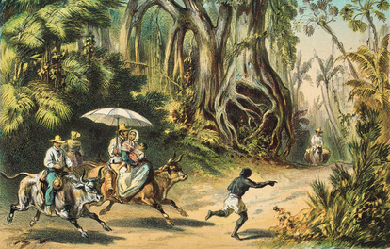
Juan Francisco Manzano (Matanzas, 1797-1856) fue un poeta cubano que nació esclavo durante el periodo colonial. Escribió dos poemarios y su autobiografía, que se publicaron antes de que obtuviera la libertad en 1836. Su Autobiografía constituye el texto más divulgado de la narrativa antiesclavista y se considera un texto clave para comprender el periodo colonial. En 1844 fue víctima de una acusación falsa por supuestamente haber participado en la Conspiración de la Escalera. Fue condenado a prisión y después de salir de la cárcel no volvió a escribir, muriendo en la pobreza en 1856. Juan Francisco Manzano es considerado hoy como uno de los más valiosos e influyentes escritores cubanos del siglo XIX. Infancia Se acepta el año de 1797 como el año de nacimiento de Juan Francisco Manzano en El Molino, una plantación de caña de azúcar cerca de la ciudad de Matanzas. Sus padres eran esclavizados. Su padre era un sastre y su madre, María del Pilar, era una de las esclavizadas preferidas de la señora Beatriz Agustina de Jústiz y Zayas-Bazán, casada con el I marqués de Jústiz de Santa Ana, Manuel José Aparicio del Manzano y Jústiz. Manzano recibió el apellido de sus dueños como era costumbre en esa época. Sus amos le trataban bien, siempre acompañaba a su señora como «un niño de su vejez». De niño recitaba de memoria sermones, el Catecismo, loas y entremeses aprendidos en las misas y representaciones de ópera a las que asistía acompañando a sus amos, que se comportaban benévolamente con él y le permitían corretear por la casa, lo que indica la cierta libertad de la que gozaba Manzano. Desde su adolescencia era conocido en su ambiente como versificador ingenioso, ya que le era fácil resaltar. Sus padrinos eran blancos y el niño esclavizado estaba muy vinculado en general con el mundo de los blancos. Se decía que el niño pasaba más tiempo en los brazos de su señora marquesa que de la propia madre. A pesar del humilde trabajo que ejercía su madre nunca se separaba de ella, solo para dormir. Se le envió a la escuela de su madrina de bautismo enseguida que cumplió los seis años de edad, en dónde lo consideraban «rápido» para aprender. Después de la muerte de su propietaria la marquesa Jústiz de Santa Ana, su propiedad fue transferida a su hija segunda, la marquesa consorte de Prado Ameno, quién abusaba de su poder y le trataba con mucha crueldad. Manzano era maltratado y sufrió frecuentemente varios castigos: era encerrado en una carbonera, pasaba hambre y recibía azotes y golpes. Primeros escritos En 1818, Nicolás de Cárdenas y Manzano, segundo hijo de la marquesa consorte de Prado Ameno,2 lo recibió como sirviente de su casa. Fue entonces cuando Manzano aprendió a leer y escribir. En los libros de su nuevo amo también estudió retórica. Con un permiso –necesario debido a su condición social- pronto publicó sus versos en el volumen lírico Cantos a Lesbia (1821), hoy perdido, al igual que sus nanas y décimas, divulgadas anónimamente en Matanzas . Igual fortuna corrió el poemario Flores pasajeras, compuesto hacia 1830, y también buena parte de la producción que apareció de forma esporádica en periódicos de la época, si bien se salvó parte de ella. Entre los años 1837 y 1838 colaboró con las revistas El Aguinaldo Habanero y El Álbum. Otra obra de Manzano extraviada es la segunda parte de su autobiografía, Apuntes autobiográficos que escribió con su propia y rudimentaria ortografía, ya que se negaba la más elemental instrucción a los esclavos. Esta segunda parte se perdió cuando la conservaba el escritor cubano-español Ramón de Palma, vinculado al Círculo de Domingo del Monte. Manzano escribió la primera parte de su autobiografía en 1839, por iniciativa del activo animador intelectual Domingo del Monte (1804-1853), quien se la había pedido para que formara parte de una serie de alegatos antiesclavistas entregados al comisionado inglés, el abolicionista Richard Robert Madden. References Wikipedia—https://es.wikipedia.org/wiki/Juan_Francisco_Manzano
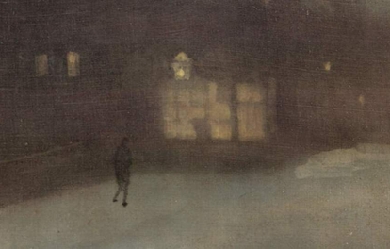
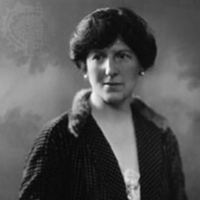
Alice Duer Miller (July 28, 1874– August 22, 1942) was an American writer whose poetry actively influenced political opinion. Her feminist verses impacted on the suffrage issue, while her verse-play The White Cliffs encouraged US entry into World War II. She also wrote novels and screenplays. Biography Alice Duer was born in New York City on July 28, 1874 into a wealthy family. She was the daughter of James Gore King Duer and Elizabeth Wilson Meads, the daughter of Orlando Meads of Albany, New York. Her great grandfather was William Alexander Duer, who was the president of Columbia College, 1829–1842. Her great great grandfather, was William Duer, an American lawyer, developer, and speculator from New York City. He had served in the Continental Congress and the convention that framed the New York Constitution. In 1778, he signed the United States Articles of Confederation. Her great great great grandfather was William Alexander, who claimed the disputed title of Earl of Stirling, and was an American Major-General during the American Revolutionary War. She was also a descendant of Senator Rufus King, who was an American lawyer, politician, and diplomat. He was a delegate for Massachusetts to the Continental Congress. He also attended the Constitutional Convention and was one of the signers of the United States Constitution on September 17, 1787, in Philadelphia, Pennsylvania. He represented New York in the United States Senate, served as Minister to Great Britain, and was the Federalist candidate for both Vice President (1804, 1808) and President of the United States (1816). At the time of her entrance into society, her family lost most of its fortune. She entered Barnard College in 1895 studying mathematics and astronomy. She helped to pay for her studies by selling novels and short essays. She and her sister, Caroline, jointly published a book of poems. Alice graduated in June 1899. On October 5, 1899, she married Henry Wise Miller at Grace Church Chapel in New York City. He was born in 1877, the son of Lt. Commander Jacob Miller, in Nice, France, where his father had been serving with the U.S. Navy. He was an 1892 graduate of Harvard University. They left for Costa Rica, where he attempted to develop rubber cultivation. This venture eventually failed and, in 1903, she, Miller and their young son returned to New York. She became known as a campaigner for women’s suffrage and published a brilliant series of satirical poems in the New York Tribune. These were published subsequently as Are Women People?. These words became a catchphrase of the suffrage movement. She followed this collection with Women Are People! (1917). As a novelist, she scored her first real success with Come Out of the Kitchen in 1916. The story was made into a play and later the 1948 film Spring in Park Lane. She followed it with a series of other short novels, many of which were staged and (increasingly) made into films. At about the same time, her husband began to make money on the Exchange and their money problems were over. Her marriage endured to the end of her life, but was not entirely tranquil. Her novel in verse Forsaking All Others (1933) about a tragic love affair, which many consider her greatest work, reflects this, though it is certainly not autobiographical. In the 1920s and 1930s, many of her stories were used for motion pictures, such as Are Parents People? (1925), Roberta (1935), and Irene (1940), taking her to Hollywood. She also became involved in a number of motion picture screenplays, including Wife vs. Secretary (1936). Her name appears in the very first issue of The New Yorker as an “advisory editor”. In 1940, she wrote the verse novel The White Cliffs, about an American girl who coming to London as a tourist, meets and marries a young upper-class Englishman in the period just before the First World War. The War begins and he goes to the front. He is killed just before the end of the War, leaving her with a young son. Her son is the heir to the family estate. Despite the pull of her own country and the impoverished condition of the estate, she decides to stay and live the traditional life of a member of the English upper class. The story concludes as The Second World War commences and she worries that her son, like his father, will be killed fighting for the country he loves. The poem ends with the lines: ...I am American bred I have seen much to hate here– much to forgive, But in a world in which England is finished and dead, I do not wish to live. The poem was spectacularly successful on both sides of the Atlantic, selling eventually approaching a million copies– an unheard of number for a book of verse. It was broadcast and recorded by British-American actress Lynn Fontanne (with a symphonic accompaniment), and the story was made into the 1944 film The White Cliffs of Dover, starring Irene Dunne. Like her earlier suffrage poems, it had a significant effect on American public opinion and it was one of the influences leading the United States to enter the War. Sir Walter Layton, who held positions in the Ministries of Supply and Munitions during the Second World War, even brought it to the attention of then-Prime Minister Winston Churchill. Death Alice Duer Miller died in 1942, and was interred at Evergreen Cemetery in Morristown, New Jersey.
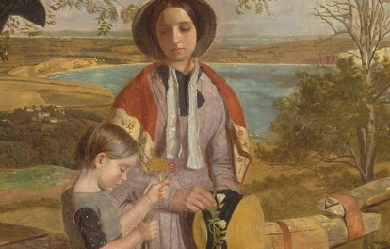
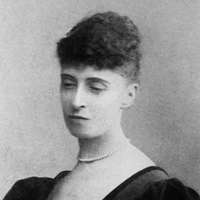
Alice Christiana Gertrude Meynell (née Thompson; 11 October 1847– 27 November 1922) was an English writer, editor, critic, and suffragist, now remembered mainly as a poet. Biography Alice Christiana Gertrude Thompson was born in Barnes, London, to Thomas James and Christiana (née Weller) Thompson. The family moved around England, Switzerland, and France, but she was brought up mostly in Italy, where a daughter of Thomas from his first marriage had settled. Her father was a friend of Charles Dickens. Preludes (1875) was her first poetry collection, illustrated by her elder sister Elizabeth (the artist Lady Elizabeth Butler, 1846–1933, whose husband was Sir William Francis Butler). The work was warmly praised by Ruskin, although it received little public notice. Ruskin especially singled out the sonnet “Renunciation” for its beauty and delicacy. After Alice, the entire Thompson family converted to the Catholic Church (1868 to 1880), and her writings migrated to subjects of religious matters. This eventually led her to the Catholic newspaper publisher and editor Wilfrid Meynell (1852–1948) in 1876. A year later (in 1877) she married Meynell, and they settled in Kensington. They became the proprietors and editors of such magazines as The Pen, the Weekly Register, and Merry England, among others. Alice and Wilfrid Meynell had eight children, Sebastian, Monica, Everard, Madeleine, Viola, Vivian (who died at three months), Olivia, and Francis. Viola Meynell (1885–1956) became an author in her own right, and the youngest child Francis Meynell (1891–1975) was a poet and printer, co-founding the Nonesuch Press. She was much involved in editorial work on publications with her husband, and in her own writing, poetry and prose. She wrote regularly for The World, The Spectator, The Magazine of Art, the Scots Observer (which became the National Observer, both edited by W. E. Henley), The Tablet, The Art Journal, the Pall Mall Gazette, and The Saturday Review. The poet Francis Thompson, down and out in London and trying to recover from his opium addiction, sent the couple a manuscript. His poems were first published in Wilfrid’s Merry England, and the Meynells became a supporter of Thompson. His 1893 book Poems was a Meynell production and initiative. Another supporter of Thompson was the poet Coventry Patmore. Alice had a deep friendship with Patmore, lasting several years, which led to his becoming obsessed with her, forcing her to break with him. At the end of the 19th century, in conjunction with uprisings against the British (among them the Indians’, the Zulus’, the Boxer Rebellion, and the Muslim revolt led by Muhammad Ahmed in the Sudan), many European scholars, writers, and artists, began to question Europe’s colonial imperialism. This led the Meynells and others in their circle to speak out for the oppressed. Alice Meynell was a vice-president of the Women Writers’ Suffrage League, founded by Cicely Hamilton and active 1908–19. Death and legacy After a series of illnesses, including migraine and depression, she died 27 November 1922. She is buried at Kensal Green Catholic Cemetery, London, England. There is a London Borough Council commemorative blue plaque on the front wall of the property at 47 Palace Court, Bayswater, London, W2, where she and her husband once lived.
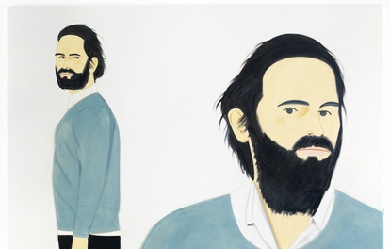
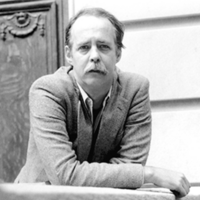
William Matthews (November 11, 1942– November 12, 1997) was an American poet and essayist. Born and raised in Cincinnati, Ohio, Matthews attended Berkshire School and later earned a bachelor’s degree from Yale University as well as a master’s from the University of North Carolina at Chapel Hill.
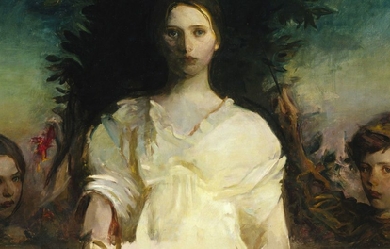

Lizelia Augusta Jenkins Moorer (September 1868 - May 24, 1936) was a poet and teacher in Orangeburg, South Carolina. She taught at the Normal and Grammar Schools, Claflin University, Orangeburg, South Carolina from 1895 to 1899. In 1907, she published a collection of poems, “Prejudice Unveiled and Other Poems”. Her work was called, by Joan R. Sherman, the “best poems on racial issues written by any black woman until the middle of the century”. Moorer attacks “lynching, debt peonage, white rape, Jim Crow segregation, and the hypocrisy of the church and the white press”. Moorer was born in September 1868 to Warren D. Jenkins and Mattie Miller in Pickens, South Carolina. In 1899, she married Jacob Moorer, an attorney in Orangeburg who frequently saw cases defending the rights of blacks against what he saw as a prejudiced legal system in South Carolina. In particular, he fought against the constitutionality of election law in the 1895 South Carolina Constitution. Lizelia was also a very strong activist. Beyond her poetry, she was active in the Woman’s Christian Temperance Union, serving as State Vice-President in South Carolina in 1910. In 1924, she attended the 1924 Methodist Episcopal Church General Conference where she gave a speech arguing that women should be allowed to be ordained within the Methodist Church. During that conference, women were, indeed, given the right to be ordained as local deacons and elders.
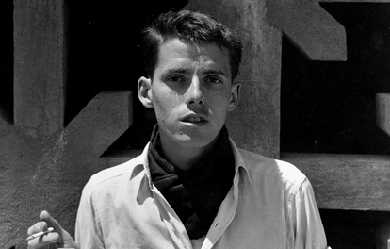
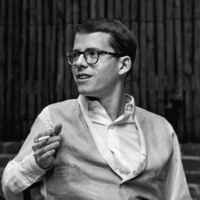
James Ingram Merrill (March 3, 1926– February 6, 1995) was an American poet whose awards include the Pulitzer Prize for Poetry (1977) for Divine Comedies (1976). His poetry falls into two distinct bodies of work: the polished and formalist lyric poetry of his early career, and the epic narrative of occult communication with spirits and angels, titled The Changing Light at Sandover (published in three volumes from 1976 to 1980), which dominated his later career. Although most of his published work was poetry, he also wrote essays, fiction, and plays.
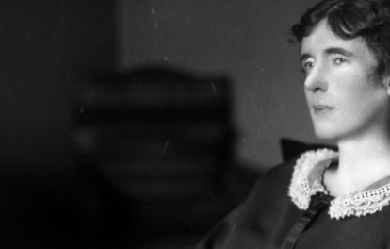
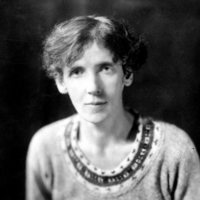
Dame Emilie Rose Macaulay, DBE (1 August 1881– 30 October 1958) was an English writer, most noted for her award-winning novel The Towers of Trebizond, about a small Anglo-Catholic group crossing Turkey by camel. The story is seen as a spiritual autobiography, reflecting her own changing and conflicting beliefs. Macaulay’s novels were partly-influenced by Virginia Woolf; she also wrote biographies and travelogues. Early years and education Macaulay was born in Rugby, Warwickshire the daughter of George Campbell Macaulay, a Classical scholar, and his wife, Grace Mary (née Conybeare). Her father was descended in the male-line directly from the Macaulay family of Lewis. She was educated at Oxford High School for Girls and read Modern History at Somerville College at Oxford University. Career Macaulay began writing her first novel, Abbots Verney (published 1906), after leaving Somerville and while living with her parents at Ty Isaf, near Aberystwyth, in Wales. Later novels include The Lee Shore (1912), Potterism (1920), Dangerous Ages (1921), Told by an Idiot (1923), And No Man’s Wit (1940), The World My Wilderness (1950), and The Towers of Trebizond (1956). Her non-fiction work includes They Went to Portugal, Catchwords and Claptrap, a biography of Milton, and Pleasure of Ruins. Macaulay’s fiction was influenced by Virginia Woolf and Anatole France. During World War I Macaulay worked in the British Propaganda Department, after some time as a nurse and later as a civil servant in the War Office. She pursued a romantic affair with Gerald O’Donovan, a writer and former Jesuit priest, from 1918 until his death in 1942. During the interwar period she was a sponsor of the pacifist Peace Pledge Union; however she resigned from the PPU and later recanted her pacifism in 1940. Her London flat was utterly destroyed in the Blitz, and she had to rebuild her life and library from scratch, as documented in the semi-autobiographical short story, Miss Anstruther’s Letters, which was published in 1942. The Towers of Trebizond, her final novel, is generally regarded as her masterpiece. Strongly autobiographical, it treats with wistful humour and deep sadness the attractions of mystical Christianity, and the irremediable conflict between adulterous love and the demands of the Christian faith. For this work, she received the James Tait Black Memorial Prize in 1956. Personal life Macaulay was never a simple believer in “mere Christianity”; however, and her writings reveal a more complex, mystical sense of the divine. That said, she did not return to the Anglican church until 1953; she had been an ardent secularist before and, while religious themes pervade her novels, previous to her conversion she often treats Christianity satirically, for instance in Going Abroad and The World My Wilderness. She never married, as a result of her lengthy and secret relationship with Gerald O’Donovan. They met in 1918 and the affair lasted until his death in 1942. She was created a Dame Commander of the Order of the British Empire (DBE) on 31 December 1957 in the 1958 New Years Honours. Macaulay was an active feminist throughout her life. Dame Rose Macaulay died on 30 October 1958, aged 77. Memorable quotes From The Towers of Trebizond: “Adultery is a meanness and a stealing, a taking away from someone what should be theirs, a great selfishness, and surrounded and guarded by lies lest it should be found out. And out of meanness and selfishness and lying flow love and joy and peace beyond anything that can be imagined.” First line of The Towers of Trebizond, cited by librarian Nancy Pearl in “Famous First Words: A Librarian Shares Favorite Literary Opening Lines,” [1] hosted by Steve Inskeep on NPR’s Morning Edition, 8 September 2004, as an example among “some notable opening lines that have made Pearl’s heart pound”. “Take my camel, dear”, said my Aunt Dot, as she climbed down from this animal on her return from High Mass. From Staying with Relations. Discussing the coat worn by a visitor, a character remarks: “Is rabbit fur disgusting because it’s cheap, or is it cheap because it’s disgusting?”
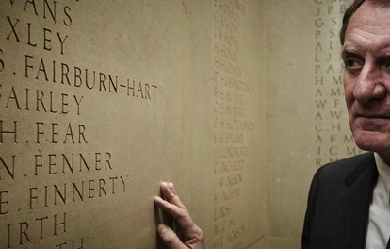
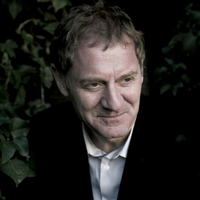
Sir Andrew Motion FRSL (born 26 October 1952) is an English poet, novelist, and biographer, who was Poet Laureate of the United Kingdom from 1999 to 2009. During the period of his laureateship, Motion founded the Poetry Archive, an online resource of poems and audio recordings of poets reading their own work. In 2012, he became President of the Campaign to Protect Rural England, taking over from Bill Bryson. Early life Motion was born on 26 October 1952 in London; his mother was Catherine Gillian Bakewell (known as Gillian) and his father Andrew Richard Michael Motion (known as Richard). The family moved to Stisted, near Braintree in Essex, when Motion was 12 years old. Motion went to boarding school from the age of seven joined by his younger brother. Most of the boy’s friends were from the school and when Motion was in the village he spent a lot of time on his own. He began to have an interest and affection for the countryside and he went for walks with a pet dog. Later he went to Radley College, where, in the sixth form, he encountered Peter Way, an inspiring English teacher who introduced him to poetry– first Hardy, then Philip Larkin, W. H. Auden, Heaney, Hughes, Wordsworth and Keats. When Motion was 17 years old, his mother had a horse riding accident and suffered a serious head injury requiring a life-saving neurosurgery operation. She regained some speech, but she was severely paralysed and remained in and out of coma for nine years. She died in 1978 and her husband died of cancer in 2006. Motion has said that he wrote to keep his memory of his mother alive and that she was a muse of his work. When Motion was about 18 years old he moved away from the village to study English at University College, Oxford; however, since then he has remained in contact with the village to visit the church graveyard, where his parents are buried, and also to see his brother, who lives nearby. At University he studied at weekly sessions with W. H. Auden, whom he greatly admired. Motion won the university’s Newdigate Prize and graduated with a first class honours degree. Career Between 1976 and 1980, Motion taught English at the University of Hull and while there, at age 24, he had his first volume of poetry published. At Hull he met university librarian and poet Philip Larkin. Motion was later appointed as one of Larkin’s literary executors which would privilege Motion’s role as his biographer following Larkin’s death in 1985. In Philip Larkin: A Writer’s Life, Motion says that at no time during their nine-year friendship did they discuss writing his biography and it was Larkin’s longtime companion Monica Jones who requested it. He reports how, as executor, he rescued many of Larkin’s papers from imminent destruction following his friend’s death. His 1993 biography of Larkin, which won the Whitbread Prize for Biography, was responsible for bringing about a substantial revision of Larkin’s reputation. Motion was Editorial Director and Poetry Editor at Chatto & Windus (1983–89), he edited the Poetry Society’s Poetry Review from 1980–1982 and succeeded Malcolm Bradbury as Professor of Creative Writing at the University of East Anglia. He is now on the faculty at the Johns Hopkins Writing Seminars. Laureateship Motion was appointed Poet Laureate on 1 May 1999, following the death of Ted Hughes, the previous incumbent. The Nobel Prize-winning Northern Irish poet and translator Seamus Heaney had ruled himself out for the post. Breaking with the tradition of the laureate retaining the post for life, Motion stipulated that he would stay for only ten years. The yearly stipend of £200 was increased to £5,000 and he received the customary butt of sack. He wanted to write “poems about things in the news, and commissions from people or organisations involved with ordinary life,” rather than be seen a 'courtier’. So, he wrote "for the TUC about liberty, about homelessness for the Salvation Army, about bullying for ChildLine, about the foot and mouth outbreak for the Today programme, about the Paddington rail disaster, the 11 September attacks and Harry Patch for the BBC, and more recently about shell shock for the charity Combat Stress, and climate change for the song cycle he finished for Cambridge University with Peter Maxwell Davies.” On 14 March 2002, as part of the 'Re-weaving Rainbows’ event of National Science Week 2002, Motion unveiled a blue plaque on the front wall of 28 St Thomas Street, Southwark, to commemorate the sharing of lodgings there by John Keats and Henry Stephens while they were medical students at Guy’s and St Thomas’ Hospital in 1815–16. In 2003, Motion wrote Regime change, a poem in protest at Invasion of Iraq from the point of view of Death walking the streets during the conflict, and in 2005, Spring Wedding in honour of the wedding of the Prince of Wales to Camilla Parker Bowles. Commissioned to write in the honour of 109-year-old Harry Patch, the last surviving “Tommy” to have fought in World War I, Motion composed a five-part poem, read and received by Patch at the Bishop’s Palace in Wells in 2008. As laureate, he also founded the Poetry Archive, an on-line library of historic and contemporary recordings of poets reciting their own work. Motion remarked that he found some of the duties attendant to the post of poet laureate difficult and onerous and that the appointment had been "very, very damaging to [his] work". The appointment of Motion met with criticism from some quarters. As he prepared to stand down from the job, Motion published an article in The Guardian that concluded, "To have had 10 years working as laureate has been remarkable. Sometimes it’s been remarkably difficult, the laureate has to take a lot of flak, one way or another. More often it has been remarkably fulfilling. I’m glad I did it, and I’m glad I’m giving it up– especially since I mean to continue working for poetry." Motion spent his last day as Poet Laureate holding a creative writing class at his alma mater, Radley College, before giving a poetry reading and thanking Peter Way, the man who taught him English at Radley, for making him who he was. Carol Ann Duffy succeeded him as Poet Laureate on 1 May 2009. Post-laureateship Motion is Chairman of the Arts Council of England’s Literature Panel (appointed 1996) and is also a Fellow of the Royal Society of Literature. In 2003, he became Professor of Creative Writing at Royal Holloway, University of London. Since July 2009, Motion has been Chairman of the Museums, Libraries and Archives Council (MLA) appointed by the Department for Culture, Media and Sport. He is also a Vice-President of the Friends of the British Library, a charity which provides funding support to the British Library. He was knighted in the 2009 Queen’s Birthday Honours list. He has been a member of English Heritage’s Blue Plaques Panel since 2008. Motion was selected as jury chair for the Man Booker Prize 2010 and in March 2010, he announced that he was working with publishers Jonathan Cape on a sequel to Robert Louis Stevenson’s Treasure Island. Entitled Silver, the story is set a generation on from the original book and was published in March 2012. In July 2010, Motion returned to Kingston-upon-Hull for the annual Humber Mouth literature festival and taking part in the Larkin 25 festival commemorating the 25th anniversary of Philip Larkin’s death. In his capacity as Larkin’s biographer and as a former lecturer in English at the University of Hull, Motion named an East Yorkshire Motor Services bus Philip Larkin. Motion’s debut play Incoming, about the war in Afghanistan, premièred at the High Tides Festival in Halesworth, Suffolk in May 2011. Motion also featured in Jamie’s Dream School in 2011 as the poetry teacher. In June 2012, he became the President of the Campaign to Protect Rural England. In March 2014 he was elected an Honorary Fellow at Homerton College, Cambridge. Motion won the 2015 Ted Hughes Award for new work in poetry for the radio programme Coming Home. The production featured poetry by Motion based on recordings he made of British soldiers returning from the wars in Iraq and Afghanistan. Work Motion has said of himself: “My wish to write a poem is inseparable from my wish to explain something to myself.” His work combines lyrical and narrative aspects in a “postmodern-romantic sensibility”. Motion says that he aims to write in clear language without tricks. The Independent describes the stalwart poet as the “charming and tireless defender of the art form”. Motion has won the Arvon Prize, the John Llewellyn Rhys Prize, Eric Gregory Award, Whitbread Prize for Biography and the Dylan Thomas Prize. Motion took part in the Bush Theatre’s 2011 project Sixty-Six Books, writing and performing a piece based upon a book of the King James Bible. Personal life Motion’s marriage to Joanna Powell ended in 1983. He was married to Jan Dalley from 1985 to 2009, divorcing after a seven-year separation. They had one son born in 1986 and twins, a son and a daughter, born in 1988. In 2009 he married Kyeong-Soo Kim. They live in Baltimore, Maryland. Selected honours and awards 1975: won the Newdigate prize for Oxford undergraduate poetry 1976: Eric Gregory Award 1981: wins Arvon Foundation’s International Poetry Competition with The Letter 1984: John Llewellyn Rhys Prize for Dangerous Play: Poems 1974–1984 1986: Somerset Maugham Award for The Lamberts 1987: Dylan Thomas Prize for Natural Causes 1999: appointed Poet Laureate for ten years 1994: Philip Larkin: A Writer’s Life, Whitbread Prize for Biography 2009: Knighthood 2014: Wilfred Owen Poetry Award Selected works Poetry collections * 1972: Goodnestone: a sequence. Workshop Press * 1976: Inland. Cygnet Press * 1977: The Pleasure Steamers. Carcanet * 1981: Independence. Salamander Press * 1983: Secret Narratives. Salamander Press * 1984: Dangerous Play: Poems 1974–1984. Salamander Press / Penguin * 1987: Natural Causes. Chatto & Windus * 1988: Two Poems. Words Ltd * 1991: Love in a Life. Faber and Faber * 1994: The Price of Everything. Faber and Faber * 1997: Salt Water Faber and Faber * 1998: Selected Poems 1976–1997. Faber and Faber * 2001: A Long Story. The Old School Press * 2002: Public Property. Faber and Faber * 2009: The Cinder Path. Faber and Faber * 2012: The Customs House. Faber and Faber * 2015: Peace Talks. Faber and Faber * 2015: Coming Home. Published by Andrew J Moorhouse at Fine Press Poetry http://www.finepresspoetry.com Criticism * 1980: The Poetry of Edward Thomas. Routledge & Kegan Paul * 1982: Philip Larkin. (Contemporary Writers series) Methuen * 1986: Elizabeth Bishop. (Chatterton Lectures on an English Poet) * 1998: Sarah Raphael: Strip!. Marlborough Fine Art (London) * 2008: Ways of Life: On Places, Painters and Poets. Faber and Faber Biography and memoir * 1986: The Lamberts: George, Constant and Kit. Chatto & Windus * 1993: Philip Larkin: A Writer’s Life. Faber and Faber * 1997: Keats: A Biography. Faber and Faber * 2006: In the Blood: A Memoir of my Childhood. Faber and Faber Fiction * 1989: The Pale Companion. Penguin * 1991: Famous for the Creatures. Viking * 2003: The Invention of Dr Cake. Faber and Faber * 2000: Wainewright the Poisoner: The Confessions of Thomas Griffiths Wainewright (biographical novel) * 2012: Silver. Jonathan Cape Edited works, introductions, and forewords * 1981: Selected Poems: William Barnes. Penguin Classics * 1982: The Penguin Book of Contemporary British Poetry with Blake Morrison. Penguin * 1994: Thomas Hardy: Selected Poems. Dent * 1993: New Writing 2 (With Malcolm Bradbury). Minerva in association with the British Council * 1994: New Writing 3 (With Candice Rodd). Minerva in association with the British Council * 1997: Penguin Modern Poets: Volume 11 with Michael Donaghy and Hugo Williams. Penguin * 1998: Take 20: New Writing. University of East Anglia * 1999: Verses of the Poets Laureate: From John Dryden to Andrew Motion. With Hilary Laurie. Orion. * 1999: Babel: New Writing by the University of East Anglia’s MA Writers. University of East Anglia. * 2001: Firsthand: The New Anthology of Creative Writing from the University of East Anglia. University of East Anglia * 2002: Paper Scissors Stone: New Writing from the MA in Creative Writing at UEA. University of East Anglia. * 2001: The Creative Writing Coursebook: Forty Authors Share Advice and Exercises for Fiction & Poetry. With Julia Bell. Macmillan * 2000: John Keats: Poems Selected by Andrew Motion. Faber and Faber * 2001: Here to Eternity: An Anthology of Poetry. Faber and Faber * 2002: The Mays Literary Anthology; Guest editor. Varsity Publications * 2003: 101 Poems Against War . Faber and Faber (Afterword) * 2003: First World War Poems. Faber and Faber * 2006: Collins Rhyming Dictionary. Collins * 2007: Bedford Square 2: New Writing from the Royal Holloway Creative Writing Programme. John Murray Ltd. References Wikipedia—https://en.wikipedia.org/wiki/Andrew_Motion
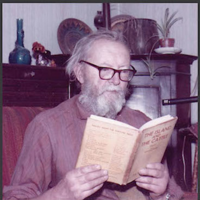
Nicholas Moore (16 November 1918 – 26 January 1986) was an English poet, associated with the New Apocalyptics in the 1940s, whose reputation stood as high as Dylan Thomas’s. He later dropped out of the literary world. Moore was born in Cambridge, England, the elder child of the philosopher G. E. Moore and Dorothy Ely. His paternal uncle was the poet, artist and critic Thomas Sturge Moore, and his brother was the composer Timothy Moore (1922-2003). He was educated at the Dragon School in Oxford, Leighton Park School in Reading, the University of St Andrews in Scotland, and Trinity College in Cambridge. Moore was editor and co-founder of a literary review, Seven (1938–40), while still an undergraduate. Seven, Magazine of People's Writing, had a complex later history: Moore edited it with John Goodland; it later appeared edited by Gordon Cruikshank, and then by Sydney D. Tremayne, after Randall Swingler bought it in 1941 from Philip O'Connor. While in Cambridge Moore became closely involved with literary London, in particular Tambimuttu. He published pamphlets under the Poetry London imprint in 1941 (of George Scurfield, G. S. Fraser, Anne Ridler and his own work). This led to Moore becoming Tambimuttu's assistant. Moore later worked for the Grey Walls Press. The Glass Tower, a selected poems collection from 1944, appeared with illustrations by the young Lucian Freud. In 1945 he edited The PL Book of Modern American Short Stories, and won Contemporary Poetry's Patron Prize (judged that year by W. H. Auden) for Girl with a Wine Glass. In 1947 he won the Harriet Monroe Memorial Prize for Girls and Birds and various other poems. Later Moore encountered difficulty in publishing; he was in the unusual position for a British poet of having a higher reputation in the USA. His association with the "romantics" of the 1940s was, in fact, rather an inaccurate reflection of his style. In the 1950s he worked as a horticulturist, writing a book The Tall Bearded Iris (1956). In 1968 he entered 31 separate pseudonymous translations of a single Baudelaire poem, in a competition for the Sunday Times, run by George Steiner. Each translation focused on a different element of the poem: rhyme, pattern, tropes, symbolism, etc. producing vastly different results, to illustrate the inadequacies and lacunae produced in translation. This work was published in 1973 as Spleen; it is also available online. Longings of the Acrobats, a selected poems volume, was edited by Peter Riley and published in 1990 by Carcanet Press. An interview with Riley concerning Moore's rediscovery and later years appears as a documentary element within the "Guilty River" chapter of Iain Sinclair's novel Downriver. According to Riley, Moore was extremely prolific and left behind many unpublished poems. An example of one of Moore's "pomenvylopes" – idiosyncratic documents consisting of poems and comments typed onto envelopes and posted to friends and acquaintances – appears online at The Fortnightly Review. His Selected Poems was published by Shoestring Press in 2014. Bibliography * A Wish in Season (1941) * The Island and the Cattle (1941) * A Book for Priscilla (1941) * Buzzing around with a Bee (1941) * The Cabaret, the Dancer, the Gentlemen (1942) * The Glass Tower (1944) * Thirty-Five Anonymous Odes (published anonymously, 1944) * The War of the Little Jersey Cows (published under the pseudonym "Guy Kelly", 1945) * The Anonymous Elegies and other poems (published anonymously, 1945) * Recollections of the Gala: Selected Poems 1943-48 (1950) * The Tall Bearded Iris (1956) * Anxious To Please (1968) (published under the pseudonym (anagram) "Romeo Anschilo", 1995 by Oasis Books) * Identity (1969) * Resolution and Identity (1970) * Spleen (1973) * Lacrimae Rerum (1988) * Longings of the Acrobats: Selected Poems (1990) * The Orange Bed (2011) References Wikipedia—http://en.wikipedia.org/wiki/Nicholas_Moore

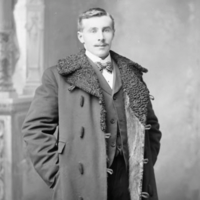
Charles Mair (September 21, 1838– July 7, 1927) was a Canadian poet and journalist. He was a fervent Canadian nationalist noted for his participation in the Canada First movement and his opposition to Louis Riel during the two Riel Rebellions in western Canada. Life Mair was born at Lanark, Upper Canada, to Margaret Holmes and James Mair. He attended Queen’s University but did not graduate. On leaving college, he became a journalist. In Ottawa in 1868, Mair was introduced by civil servant and writer Henry Morgan to young lawyers George Denison, William Foster, and Robert Haliburton. “Together they organized the overtly nationalistic Canada First movement, which began as a small social group.” Mair “represented the Montreal Gazette during the first Riel Rebellion, and was imprisoned and narrowly escaped being shot by the rebels.” Mair was a Freemason Mair "was an Officer of the Governor-General’s Body Guard during the second Riel rebellion in 1885, and was later employed in the Canadian civil service in the West." He died in Victoria, British Columbia. Writing Mair published the first book of poetry in post-Confederation Canada, 1868's Dreamland and Other Poems. “Negligible as verse,” says The Canadian Encyclopedia, "the volume gained interest when Mair escaped after being captured by Louis Riel during the Red River disturbances of 1869-70.” The Dictionary of Canadian Biography (DCB) states that Dreamland “demonstrates a conventional colonial approach to poetry. Such poems as 'August’ succeed in their attention to natural detail: descriptions of the blueflies, the milkmaids, and the 'ribby-lean’ cattle in parched fields anticipate the mature nature poetry of Archibald Lampman. But too often he wrote not of the timberlands he knew but of a dreamland weakly modelled upon the romantic flights of Keats.” However, the book was praised by “the established poet Charles Sangster, who referred to Canada’s sophisticated literary tradition as one that was habitually overlooked in the popular press.” Writing later in the Ottawa Journal, William Wilfred Campbell saw Dreamland as a precursor to the nature poetry later popularized in Canada by the Confederation Poets: “The thirty-three poems constitute the first attempt to deal with Canadian nature, in the manner of Keats and the other classic poets, and many of them in theme and treatment are similar to the verse of Lampman and Roberts.... And there are strong evidences in Mair’s work that he influenced these poets to a great extent.” Mair published Tecumseh, a historical drama mainly in blank verse dealing with the War of 1812, in 1886. Canadian critic Alan Filewood wrote of the political and philosophical ideas expressed by Mair in the poem: Mair’s projection of Canadian nationhood is embodied in the character of Lefroy, a Byronesque poet who flees civilization to seek solace in nature’s genius. He learns– tragically– from the British General Brock that natural law finds its outward form in the monarchic principle, and from the Indian chieftain Tecumseh that nature must be defended against the perversion of American materialism. The dying Tecumseh legitimizes the proto-(Anglo) Canadians as the natural guardians of the land, and Canadian manhood finds mature expression in a race of armed poets.(...) Mair looked to the day when the dominions would assume the responsibilities of adulthood: Then shall a whole family of young giants stand 'Erect, unbound, at Britain’s side-' her imperial offspring oversea, the upholders in the far future of her glorious tradition, or, should exhaustion ever come, the props and supports of her declining years. The DCB calls Tecumseh "a major contribution to our 19th-century literary heritage, wherein the War of 1812 is the central event of Canadian history. Among the many literary treatments of this war, including works by Sangster, John Richardson, and Sarah Anne Curzon... Tecumseh stands as the most accomplished." The Canadian Encyclopedia says that the poem’s “blank verse is pedestrian and untheatrical”, but it also tells us that “Tecumseh was important in the development of Canadian drama. It presents a vision of Canada as a co-operative enterprise in contrast with the self-seeking individualism of the United States.” Recognition Mair was elected a Fellow of the Royal Society of Canada in 1889. In 1937 he was designated a Person of National Historic Significance. Canadian folksinger Gordon Lightfoot adapted a line from Tecumseh, “There was a time on this fair continent,” for the first line in his 1967 historical ballad, “The Canadian Railroad Trilogy” ("There was a time in this fair land when the railroad did not run"). Publications * Dreamland and Other Poems. London: S. Low, 1868. Montreal: Dawson, 1868, * Tecumseh. Toronto: Hunter, Rose & Co., 1886. London: Chapman & Hall, 1886. * Through the Mackenzie Basin: A Narrative of the Athabasca and Peace River Treaty Expedition of 1899 . London: Simpkin, Marshall, Hamilton, Kent & Co., 1903. References Wikipedia—https://en.wikipedia.org/wiki/Charles_Mair
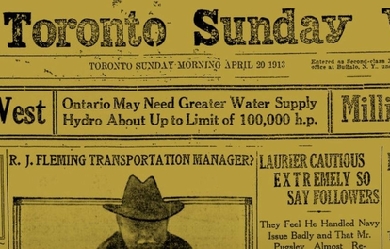
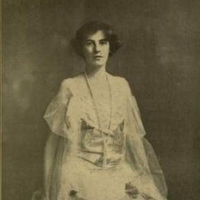
In a very real sense Miss Laura Elizabeth McCully is a Toronto writer, as, with the exception of one academic year in the United States and a few months in Ottawa, she has lived all her life in this city. She is a grand niece of the late Hon. John McCully, of Truro, Nova Scotia, one of the Fathers of Confederation; and is the daughter of Samuel Edward McCully, M.D., and Helen (Fitzgibbon) McCully. Her father is of Manx descent, and her mother is a descendant of the late James McBride of Halton county, Ontario, magistrate, who was one of the pioneers of this province, and who heroically cleared off forest and left to his heirs, one thousand acres of valuable farm lands. Miss McCully's poetry is enriched by classical illustrations, and expressed in forceful and melodious language. Her imagination relates us to the universe and to humanity. Wordsworth found new lessons in the fields and woods, and taught them; Lanier made trees, flowers and clouds our intimate friends; when we read Miss McCully's nature poems we are not conscious of the moralizing of the poet, we are in the glens ourselves looking at the afterglow, with the purity, the glory, the growth spirit and the transforming beauty of nature flowing into our lives. In a few flaming lines her stories reveal the love, the despair, and the ultimately triumphant faith of humanity. With tender pathos she unveils the evils of social and industrial conditions, and in clear tones arouses each soul, and makes it conscious of the splendour of the better conditions ahead, and thrills it with the determination to achieve for justice, freedom, and truth. – JAMES L. HUGHES, LL. D.


